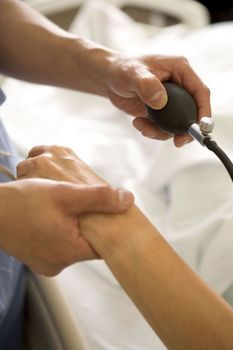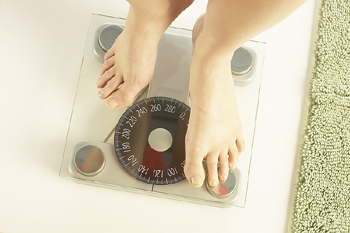Health Guides
How to Handle Life Insurance if You Smoke
People who smoke should know that smoking isn’t just hazardous to your health – it is also hazardous to your wallet. Smokers are practically guaranteed to be charged higher life insurance premiums than non-smokers for the simple reason that the mortality rate for smokers is higher than it is for non-smokers. If you’re more likely to die early, life insurance companies want to make sure they can get as much money out of you as possible, as soon as possible.
Even if you no longer smoke, your past will have an effect on your current insurance rates. Insurance companies usually will take the fact that you have stopped smoking into consideration when calculating the premium, but the rates will still be higher than for someone who has never smoked. Insurance companies tend to classify former smokers into three different categories: preferred plus, preferred and standard.
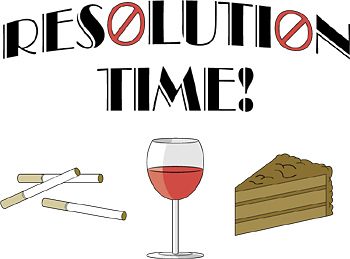
Tobacco, Life Insurance, and Smokers
Preferred plus policyholders are people who stopped smoking five or more years ago. Preferred policyholders are people who stopped smoking three to five years ago. Standard policyholders are people who stopped smoking 12 months to three years ago. Preferred plus policyholders will be charged a lower premium than preferred policyholders, and preferred policyholders will be charged a lower premium than standard policyholders. The reasoning behind these categories is that the longer someone stays away from smoking, the less likely they are to die of a smoke-related disease, the more likely their body will have healed from the smoking-inflicted damage, and the less likely they are to resume smoking again. If you purchase an insurance policy as a smoker but later on you decide to quit smoking, make sure to inform your insurance company of these changes. Once you start qualifying for former smoker rates, you’ll be able to start saving money.
Some people may be tempted to lie to their insurance companies about their smoking status. This is not a good idea; insurance companies require potential policyholders to undergo thorough medical exams before they agree to provide insurance. A good doctor can easily figure out if you’re lying about your smoking status, whether it be past or present. For example, if you currently smoke, your urine will contain traces of nicotine. Your lie will be easily revealed once the insurance company receives the results of your urine test.
Another thing you should never do is entirely forgo life insurance because you smoke. Sure, your policy will be more expensive, but that’s not a good reason to chuck life insurance out the window. By smoking, you are doing something that, whether you like it or not, increases your chance of dying. When you look at it from this perspective, a smoker needs life insurance more than the average non-smoker does. The best thing you could possibly do for your loved ones would be to stop smoking, but if you can’t manage that, at the very least make sure to get life insurance.
This post was provided by the life insurance website www.lifecover.ca. For more insurance resources visit their website today.
The Ten Healthiest Vegetables to Grow and Eat
Your grandparents or great grandparents most likely had a Victory Garden in their backyard. During the times of food rationing in World War I and II, people were encouraged to grow food in their back yards to ease the food shortage, and as a sign of patriotism and defiance. The garden itself was a sign of victory. It gave ordinary people a chance to feel like they were contributing to the war effort.
Today, the Victory Garden is back in style. But instead of victory over a foreign enemy, we celebrate victory over a sluggish economy, poor health, contaminated and overly processed foods. 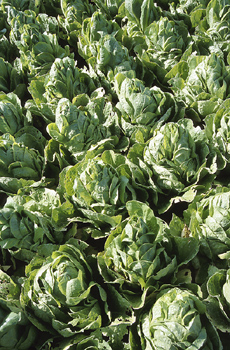 When you grow your own fruits and vegetables, you’re taking responsibility for your health into your own capable hands. Most of us weren’t raised on a farm, and gardening may not come naturally. But if you take your time, and allow yourself a few failures along the way, you’ll soon be an expert gardener and eating fresher, more nutritious foods than ever before.
When you grow your own fruits and vegetables, you’re taking responsibility for your health into your own capable hands. Most of us weren’t raised on a farm, and gardening may not come naturally. But if you take your time, and allow yourself a few failures along the way, you’ll soon be an expert gardener and eating fresher, more nutritious foods than ever before.
How to know what to grow
You’ll need to consider your space first. Some vegetables need a plot of land with room to spread out. But many can be grown in a coffee can or even an old boot! Container gardening is part agriculture, part eclectic art. You’ll also need to consider things like growing season, light and water availability, and what you plan to do with a bumper crop. Will you eat everything fresh? Or will you want to preserve, pickle or freeze some of the crop? Make sure you have the space and materials for your storage. If your freezer is full of zucchini, there’s not much room for ice cream.
Most importantly, though, what do you like to eat? And what is most nutritious? Staples like corn and potatoes are plentiful and cheap, so it’s best to put your efforts toward more nutrient dense crops. Here’s a list of the top 10 most nutritious garden veggies. Remember, a garden is a thing of pleasure. Don’t plant a veggie you hate just because it’s on the list. Substitute you favorites in.
Leafy greens
These babies are some of the easiest veggies to grow and come in lots of varieties–spinach, kale and collards are some of the most nutritious greens. “You’ll get more calcium in a bowl of fresh greens than in any dairy product,” says Dr. Brahm, a dentist in Glastonbury, CT. They’re also high in iron, potassium, and Vitamins A, B6, and C.
Broccoli
If you love broccoli, grow lots of it! Broccoli gives you plenty of calcium, iron, and magnesium, as well as Vitamin A, B6, and C. Just one cup of raw broccoli is 130% of your daily recommendation for Vitamin C.
Tomatoes
Tomatoes are some of the most popular garden residents. They contain lots of fiber, iron, magnesium, niacin, potassium, and Vitamin A, B6, and C. They’re also a great source of the antioxidant lycopene. And, well, they’re just so darn tasty!
Bell Peppers
Red bell peppers are high in potassium, riboflavin, and Vitamins A, B6, and C – in fact, one cup of red bell pepper packs an amazing 317% of the recommended daily allowance of Vitamin C and 93% of the recommended Vitamin A.
Garlic & Onions
Onions, leeks and garlic, besides being tasty, contain high levels of antioxidants and phytonutrients. Allicin (the key ingredient) is a known anti-viral, anti-bacterial and anti-fungal agent. You also get lots of vitamin C, B6 and manganese.
Carrots
Carrots are best grown in loose soil without a lot of rocks, which make them hard to grow in some areas. If you have the right conditions, they’re a great choice–very high in fiber, manganese, niacin, potassium, and Vitamins A, B6, and C.
Peas
The only downside to these common garden veggies is it’s hard to get them back to the house without eating them all. Peas are high in fiber, iron, magnesium, potassium, and Vitamin A, B6, and C. They also store well frozen, canned or dehydrated.
Beans
We’re not talking about green beans here, but the kind you can dry and store indefinitely like kidney beans and black beans. Dry beans, in general, are high in iron, fiber, manganese, and phosphorous. They are also a staple protein for vegetarians.
Sweet Potatoes
Sweet potatoes are a great source of nutrition, as long as you stay away from the brown sugar and marshmallows. You’ll get lots of fiber, potassium, manganese and vitamins A, C and B6.
Brussels Sprouts
These baby cabbages get a bad rep from kids, but these fiber-rich veggies pack some serious nutrition. They are a great source of thiamin, riboflavin, iron, magnesium, phosphorus, folate, potassium, manganese and copper, Vitamins A, C, K and B6. Vitamin C, Vitamin K, Vitamin B6,
Whether you’re trading your lawn for a garden plot or just planting a few container veggies, you can’t beat the health benefits of fresh air and fresh food.
How to Get Over Your Fear of the Dentist
You are not alone. Many people from all walks of life hate going to the dentist. Even a simple cleaning can be enough to strike fear in the heart of even the bravest person. Jokes are made to ease the discomfort. Dentists are painted as things to be feared in movies as a reflection of life. It’s understandable why the dentist might be frightening, especially to children. After all, the dentist’s office is full of strange and intimidating looking equipment and unfamiliar noises.
Where does the fear come from?
A fear of the dentist can come from any number of places. Whether it’s from negative experiences of the past or the uncomfortable surroundings, anxiety over a dentist appointment is a very manageable problem. A good dentist can help even the most anxious of patients have a pleasant visit.
First, find a dentist you trust
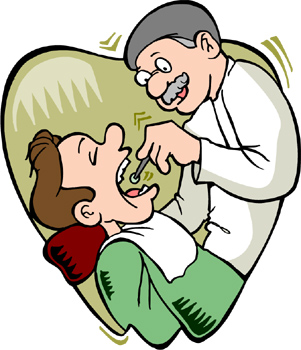 The first necessary step to overcoming your fear of dentists is finding a good dentist. Talk to your friends and family for a good recommendation. If the people you know and trust feel comfortable, there’s a greater chance you will, too. If none of your friends and family can make a good recommendation, it’s time to hit the yellow pages or the internet. Look for ads advertising that a dentist is “gentle”, or frequently works with patience fearing dentists. If that’s not enough to help you make your choice, check out reviews online. Many popular review sites have customer reviews, which can be excellent references.
The first necessary step to overcoming your fear of dentists is finding a good dentist. Talk to your friends and family for a good recommendation. If the people you know and trust feel comfortable, there’s a greater chance you will, too. If none of your friends and family can make a good recommendation, it’s time to hit the yellow pages or the internet. Look for ads advertising that a dentist is “gentle”, or frequently works with patience fearing dentists. If that’s not enough to help you make your choice, check out reviews online. Many popular review sites have customer reviews, which can be excellent references.
Get clues from your first phone call
After you’ve decided on a dentist, it’s time to make the appointment. Listen to the receptionist. Is she friendly? Does she answer all of your questions and concerns as completely as possible? Friendly, helpful staff is often a sign of a friendly and helpful dentist. If you get a chance, swing by the office and take a look. An office that appears pleasant and busy is a sign of a successful dentist. To be successful, his customers must like his service.
Write up a list of concerns and bring it with you
When preparing for the visit it helps to think of what bothers you about dentistry. If it’s the sound of drilling, picking, and breaking teeth, many dentists will allow you to bring an mp3 player and headphones to tune out the procedure. Come up with a list of other concerns you have so you can discuss them with your dentist at your appointment. Having them on hand will prevent the added anxiety of trying to remember it all when you get there. It may also help to arrange to have a friend come with you to the appointment. Sitting in the waiting room is a lot less intimidating when you don’t have to wait alone. Practice some relaxation techniques in anticipation for your appointment. If you don’t know any, look some up online.
Voice your concerns, don’t try to hide your fear
At the office be sure to inform the dentist or dental hygienist of your concerns. Most dentists are more than happy to help you overcome your fears and make you as comfortable as possible. They are supportive people who are willing to help you overcome any past traumas and work to make the experience as pain-free and easy as possible. Your dentist may also be able to suggest ways to help manage your anxiety, such as visualization or even sedation. Your dentist is also there to answer any questions you have at the beginning of the appointment. Sometimes that knowledge alone can increase your comfort during a cleaning or procedure.
Dr. Takacs, a sedation dentist in Lexington, KY suggests that it’s helpful to change your perspective when it comes to dentistry. “Think of your dentist as a friend,” she advises. “Remind yourself that your dentist, like any other doctor, cares about your wellbeing and is there to help.”
It’s all too easy to think of the dentist as frightening, so sometimes it takes a little while to become comfortable with a different outlook. It’s easier to feel confident about seeing someone nice, friendly, and looking after your oral health than it is to think about someone who does root canals and drills teeth for a living. By focusing on the good, it’s easier to relax even before the appointment begins.
Sometimes getting over your fear of the dentist is as simple as finding a dentist that works well for you. Take some time to find a good dentist and to discuss your concerns openly. It can make a world of difference.
How to Improve Your Cholesterol
Lower Your Litoprotein Levels
Learning how to improve your cholesterol can extend your life by years, if not decades.
Not only that, lowering your cholesterol levels will improve the quality of your life.
Maybe both of those facts are axiomatic, but people who are trying to reduce their cholesterol numbers should be reminded that their life will improve, even if they don’t get to eat everything they’ve grown used to over the years.
When I list off a group of cholesterol improvement suggestions, you’re either going to completely revolt at the notion or try an unrealistic attempt to cut everything out of your diet, setting yourself up for a backslide.
Unless a severe medical condition has brought you to this article, I suggest you choose a half-dozen of the tips and try them out first. Take realistic steps to improve your health, then make incremental improvements as your body and mind adjust to the changes in your lifestyle.
Quick Cholesterol How-To Chart
Below is a quick set of tips for improving your cholesterol. While living healthier entails more than what’s on this list, if you can follow most or all of the following items, you should be in pretty good shape. That might be harder done than said.
- Eat Smaller Portions
- Eat Smaller Evening Meals
- Eat Less Red Meat
- Eat More Fish
- Eat Few Egg Yolks
- Eat Whole Breads and Cracker
- Eat Whole Grain Pasta
- Eat Whole Grain Cereal
- Eat More Legumes
- Don’t Eat Fried Foods
- Eat Less Saturated Fat
- Eat Only 3-4 Ounces of Fish
- Eat Only 3-4 Ounces of Poultry
- Eat More Soy Products
- Eat Much Less Refined Sugar
- Eat Less White Flour
- Eat Less Sugar of All Types
- Eat Fewer Fatty Condiments
- Drink Less Alcohol
That’s a daunting list of directions. Anyone with high cholesterol is better off consuming no alcohol whatsoever, but most of us already assumed that drinking alcoholic beverages is something not done optimally, anyway. Reduce as much as you can. In cases where you don’t feel you can cut foods out cold turkey, make an effort to reduce intake and reduce as much as you can.
In the case of the egg yolks, I’d suggest eating no more than two or three of these in a week’s time. Legumes include black-eyed peas and lentils, which are among some of the healthiest beans to eat. Refined sugars tend to be the sugars you find in candy, cookies, cakes, and a myriad of other goodies. It’s hard to avoid sweets altogether if you have a sweet tooth, but try to replace some of the refined sugars with fruits instead.
What is a Good Cholesterol Level?
There is no one answer for that question, so I’ll talk in generalities here. For your average person, a low-density lipoprotein or LDL cholesterol level under 130 milligrams per deciliter of blood is best. If you are considered to be an “at risk” patient, your LDL cholesterol level may need to be significantly lower.
For instance, someone with a history of heart problems or who’s had a heart attack in the past may need a cholesterol level in the 70 mg/dl range. Other risk factors that might change your optimum level of cholesterol includes smoking, diabetes, and high blood pressure. If you smoke habitually or you have either diabetes or high blood pressure, you need to keep your cholesterol level lower. Smoking hardens your vascular system, so when you have hardened arteries combined with high cholesterol, that’s a recipe for disaster.
What Is Low-Density Cholesterol?
LDL is considered the bad cholesterol, so this is the one most people look at when getting their cholesterol level checked. That doesn’t mean you should totally disregard your other cholesterol, though.
High-Density Cholesterol
HDL cholesterol is the good cholesterol (or is considered as such), because its appearance in large amounts tends to unclog your arteries. As a general rule, the higher this count goes, the better. But if your total cholesterol count (LDL and HDL combined) goes above 200 mg/dl, then you are still considered to have a high cholesterol levels.
How to Improve Your Blood Pressure
Blood Pressure Advice
When you’re researching how to improve your blood pressure, you’re going to hear a lot about what to avoid, what to cut out of your diet, and what not to do.
That’s can get your healthy living off to a negative start, though, so I wanted to offer a number of “what to do” tips for lowering your blood pressure.
You probably already know that lowering your sodium intake is huge in lowering your blood pressure.
The steps below help to lower your sodium levels by taking some action and introducing low sodium foods into your diet to replace the standard high sodium foods you normally eat.
Eat Fruits and Vegetables
Eating produce is one of the best ways to lower your blood pressure. Many fruits and vegetables that are low in sodium happen to be high in potassium, which is a good thing. Eat foods like tomatoes, oranges, bananas, baked potatoes (not french fries or tots), sweet potatoes, cantaloupes, spinach, winter squash, and beans.
Eat Healthy Fats
Not all fats are bad. Adding “healthy fats” to your diet can be a good thing, if you’re replacing the bad fats with new sources of nutrition. Unstaturated fats, including monounsaturated fats and polyunsaturated fats, are the good fats you’re looking for. Here’s a list of high-fat foods to look for.
- Olive Oil
- Olives
- Sunflower Oil
- Sesame Oil
- Canola Oil
- Soybean Oil
- Safflower Oil
- Corn Oil
- Avocados
- Almonds
- Peanuts
- Macademia Nuts
- Pecans
- Cashews
- Hazelnuts
- Walnuts
- Peanut Butter
- Soymilk
- Tofu
- Sunflower Seeds (watch out for the salt)
- Sesame Seeds
- Pumpkin Seeds
- Flaxseed
- Salmon
- Tuna
- Herring
- Sardines
- Trout
- Mackerel
Long story short, eating lots of fish and nuts tend to be a good thing. Peanut butter is good to mix into your diet a few times a week. Cooking in healthy oils is important. Dipping your bread in olive oil with herbs is a much better option than butter or margarine, and once you get used to it, you’ll come to look forward to that part of your meal.
Eat Whole Grains Instead of Starches
Whole grains help you retain your potassium. Common whole grain products you’ll find at the grocery store include whole wheat bread, whole wheat pasta, popcorn, teff flour, rolled oats, triticale flour, and whole wheat flour. Refined-grain products are not as healthy as whole wheat and include non-wholewheat pasta, white flour, white bread, hominy, and white rice.
Reading the packages of whole wheat foods can get tricky or even deceptive at times. If the first ingredient says “wholewheat”, you’re usually in good condition. But some products are colored with molasses or caramel coloring to make them appear like whole wheat products, while other products list wholewheat in their ingredients, even when it’s not the dominant ingredient. Pay close attention when buying wholewheat.
Eat Legumes
Much of this has already been covered, but I’ll mention it once again. Eat legumes like beans, seeds, and nuts. These are foods produced by plants to regenerate life, and eating legumes is a good way to increase the length of your life, too. Eating nuts, seeds, and beans is almost always a good idea.
Drink Low-Fat Milk
Low fat milk has all the nutritional value in calcium that whole milk has, but without fat content or with a much-reduced fat content. Buying 2% or 1% or skim milk is a good way to lower your fat intake and hardly notice it.
Eat Dark Chocolate (in small amounts)
Eating dark chocolate in small amounts introduces antioxidants into your bloodstream that activate nitric oxide. Nitric oxide relaxes your blood vessels. Remember that eating a lot of dark chocolate is not healthy. Also realize that milk chocolate doesn’t produce the same positive results.
Work on Your Inner Calm
Take ten minutes a day to work on your inner calm. Spend that time breathing deeply and clearly your mind about the past and the future. Focus on the moment. Listen to calming music. Clear your mind. Then take some more deep breaths.
Breathing deeply is a good stress-reducer throughout the course of the day, too. If you feel yourself getting stressed, take three deep breaths before you say or do anything. Other stress relievers include laughing throughout the day (it releases endorphins), enjoying time with children and family, and finding other positive activities that take your mind off your cares and concerns.
Get Moderate Exercise
Get your blood flowing every day with 30 minutes of moderate exercise. Get a 30 minute walk or two 15 minute walks during the day. Go to the gym if you prefer. Do something to increase blood flow, breathing capacity, and work out your muscles. All of this tends to release stress.
How to Prepare for Your First Child
No other event in your life – not marriage, not a new job, not even a month-long vacation to Switzerland – will alter your life as much as your first child. From sleep and work to exercise and running errands, babies will rock your world. Just how can a nine-pound bundle change so much in the course of a day?
Consider your pre-baby routine as it stands now. When you and your spouse want to see a 9:00 movie, you head out and do it. Need a haircut? Make an appointment and go. And when you’re super tired after a long week the Saturday sleep-in is non-negotiable. Newborns have a different idea on how your life should run. They need to eat every three hours. Around the clock. They get fantastically fussy just when your hands are full preparing dinner. And after weeks of getting up at night, when you feel a deep tired ache down to your bones, desperately needing a night (not a day, not a week, but just a single night) off, babies pick that night to randomly wake up at odd hours. Which means you’re up too.
But lest you swear off the whole ordeal, understand that bringing children into the world is a supremely important task. Life as we know it ends without babies. Children simply illuminate how selfish we are with our time. No article or blog can prepare you for that realization, which lies at the core of why babies are so difficult. You’ll simply have to run through the fire knowing that billions of others have done the same and survived. There are, however, a few ways to prepare for selfless giving that break the ice a bit and prepare your current routine for baby.
Select a list of reliable babysitters.

How to Prepare for Your First Child
You will need time away from the baby with your husband. Repeat eight times. Then repeat again. Even as early as a month after delivering, you both need to spend time as a couple, because that’s who you were first. When Junior grows up and hits the road, you don’t go with him. And if you have a ridiculous notion that as long as you stay with your spouse through the child’s early years and then split when he goes to college, you failed as both parent and spouse. The last day of your marriage is more important than the first. So get the sitters lined up and keep dating! Make sure your babysitters (especially for a newborn) are older and have CPR training.
Define “help” to extended visitors.
Don’t wait until birthing recovery (which is amazingly painful and lingering) to let your family know the best way to support you when baby gets home. Define it clearly for your mother-in-law or it will be the most miserable week of your life. The best advice I got was to tell people staying with me to help with cooking, cleaning, and other house stuff so I could relax with our new baby.
Organize your house and keep it clean.
Don’t be insane about it but having a place for everything in your home will make life so much easier when baby arrives. The only thing worse than sleep deprivation is sleep deprivation in a pigsty. Cut the cable to hire a maid if you can’t seem to get it done yourself. Routines for housework are great. I always unload the dishwasher in the morning and stick dirty dishes and utensils in it throughout the day before running it at night. Laundry is done during three days each week. I alternate cleaning the carpet and tile every other day so it stays relatively clean. If you’ve worked until the baby comes this will be a great transition to being homebound for a while. You might be tempted to think the house will stay clean because you’re “at home all day to do it”. Good luck with that.
Find friends with kids and help them out.
Your schedule is wide-open right now, whether you know it or not. Get some buddies who are a bit further along on the journey and soak up any information you can from them. Volunteer to change diapers, feed their little Princess, or just clean house. It becomes immeasurably harder to help each other out after your baby comes, so use your enormous amounts of time and be an extra hand to another new mom. You’ll also get a good refresher on baby care.
Practice 3-minute showers.
I always put my first in the swing in our bathroom while I took a rapid fast shower, since I preferred to nap when she did. While it was a bit over-stimulating to her, it worked out for us in those early weeks. Gone are the days of 20-minute showers followed by half an hour to primp. Even if you make the time to do it when hubby gets home you have other things to worry about. You still need to take a shower and look presentable, but just do the basics.
Play with your new baby equipment.
Open and shut the stroller. Do the same with your play yard. Stock up on all sorts of rechargeable batteries and have them ready for the annoying toys Aunt Mildred gives to you. Practice installing your car seat, removing the infant carrier and lifting the handle up and down. Even stick a baby doll in it! Making these routine things automatic will remove some of the stress after delivery.
Arrange once-a-week help from a friend.
This is different from getting date-night help. Once-a-week help can be from your mom, cousin, or someone else with a young baby. This is your time to get a haircut, grocery shop, or take a long nap if you need it.
Don’t buy a bunch of stuff. Especially not blankets.
Unless you just moved or truly have no friends you will be bestowed with more unnecessary frills than you could hope for. The pint-sized snuggly crib animals and homemade blankets will come out of the woodwork. Plus it’s easier to buy things you know you and your family need. A solid percentage of baby junk is just that. Wait a couple weeks before blowing your wad. And when it comes time to buy baby stuff, buy used or use coupons to save money on a purchase that is likely only going to last a few months before it’s grown out of.
Read two or three baby books, but no more.
The best way to find good baby books is to watch other moms whose children respect them and behave. Then ask them if they would recommend anything that helped them. Most of the literature on the subject of babies is completely contradictory and will drive you insane if you take it at face value. Observe other moms and get the scoop directly from them. Authors and folks with letters after their names don’t know you, your child, nor your unique circumstances.
Stop working early, if you can.
The shift from full-time work to full-time baby is immensely tough. To stop work a couple days before birth and then transition to the home immediately is too much stress, even though many women make that same path. I’m convinced that lack of mental, emotional, and physical preparation for such a life change contributes to post-partum stress. Stop a few weeks early and get your mind set on this meaningful yet daunting shift. You need time to talk with your spouse and outline your new responsibilities.
Avoid intentional sleep deprivation.
Most pregnant women have a tough time sleeping anyway. But there’s no need to “get in the routine” of up every 3 hours. Get your rest now and get to bed early to prepare for the labor marathon and ensuing weeks of sleeplessness. It’s really not that bad. You get to spend time nursing or bottle-feeding your little one. That time is so limited and precious that you’ll eventually miss doing it.
If you’re like I was before children, the thought of giving up every inch of myself for a baby terrified me. Each part of the daily routine is turned over on its head to make way for an infant. What I didn’t expect was the accompanying feeling of acceptance through all of it. We can’t head out with our kid-less friends until midnight. Or eat dinner without having to jump up a dozen times. We cherish things like singing kid songs, going to bed early, and reviewing pictures of the new bundle. But neither of us mind that change. The desire for the things we used to do is gone and we don’t miss it.
How to Pop a Boil
If you don’t learn how to pop a boil the right way, you can make the infection worse than it already is. A boil is a skin abscess which forms when a localized infection forms on you skin. This infection starts as a tender spot, then gradually hardens, until the center of the boil softens into an abscess full of white blood cells and bacteria.
Why Do We Get Boils?
The bacteria is what causes the skin infection. White blood cells are the part of our blood which fights infections, so whenever we have an infection, white blood cells collect around the infection, attempting to fight this invasion of our body. The white blood cells are what gives pus its color. When you pop a boil, you’re attempting to drain the infection out of your body.
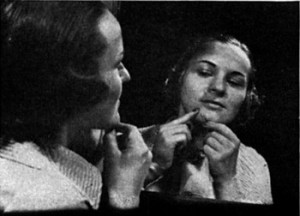
Popping Boils
Popping a boil is tricky, though, because your might not get all of the infection out. And if you don’t use proper hygiene when popping a boil, you risk exposing the sore to other bacteria, and therefore other infection. So study how to pop a boil the proper way and avoid making the infected area worse.
When to Pop a Boil
Don’t pop a boil when it’s still in the hardening phase. Only pop a boil when the soft white abscess has formed. At the early stage, opening the infection and draining it isn’t helpful, because enough white blood cells haven’t formed around it to isolate the infection and kill the bacteria at the heart of the infection.
Instead, when the boil still appears to be hardening, hold a warm or hot wash cloth on it. This brings blood to the infected area, speeding up the healing process.
Boil Popping Materials
You’ll need a few materials to pop a boil with the proper hygiene, so look in your cabinet, to make sure you have all of these before you pop a boil. If you don’t, go to the store and get prepared.
- Safety Pin
- Soap
- Clean Waste Cloth
- Clean, Dry Towel
- Candle
- Matches
- Hydrogen Peroxide
- Triple Antibiotic Ointment
- Bandage or Band-Aid
Prepare to Pop the Boil
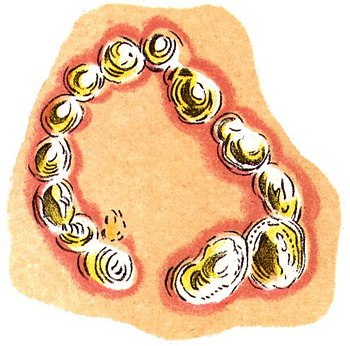
How to Pop a Boil
It’s best to start in an area with plenty of lighting, along with access to hot water, soap, disinfectants and the tools you need to pop a boil. Your bathroom is the best place to do this.
Before you pop a boil, always wash your hands with warm water and soap. This cleans your hands of any germs that might infect your boil further. Next, get a clean wash cloth and run it under hot water, until the rag is as warm as the water. Wring the wash cloth out and set it in a clean area.
Dry your hands on a clean towel and now you are read to pop a boil.
Boil Popping Materials
You’ll need a safety pin and a flame, preferably from a candle, in which to heat up your safety pin. Take the safety pin, unfasten it and run the pin over the flame for 1-2 minutes.
The tip of the pin needs to be heated up considerably, to kill the germs on its surface, because you’ll be sticking this safety pin into your boil. Make certain the safety pin is thoroughly purified with flames.
Popping the Infected Boil
Take the warm face cloth and apply it to the surface of the boil firmly, but not too firmly. Hold it on the surface of the boil for 10-15 seconds. The cloth should still be relatively hot at this point. This cleans your skin and brings blood to the surface of the skin, to aid in the draining process, once the boil is popped.
Next, prick the head of the white part of the boil with the disinfected safety pin tip. This should place a hole in the top of the boil. Set down the pin. Immediately take both fingers and begin to squeeze on either side of the boil, as hard as your pain tolerance allows.
When you squeeze the boil, pus should begin to emerge fairly rapidly. Continue squeezing until you see blood. As soon as blood emerges, you’re finished and can stop squeezing. Remember, that little bit of blood is a good sign, because it’s washing out the wound.
Clean the Lanced Boil
Wash the boil area with hydrogen peroxide, which should kill any germs lingering around the wound. This should reduce the chances of infection considerably. Take a squeeze of triple antibiotic ointment and rub it onto the boil area.
Finally, put a Band-Aid or bandage on the area, to keep bacteria out of the punctured area, allowing your boil to finish healing properly. That’s how you pop a boil.
Popping Larger Boils
Large boils should be looked at by a doctor, before you pop it. Some boils require surgery to lance, while others indicate something more serious than a simple ingrown hair or bacterial infection. If the boil looks to be anything more than a simple abscess, talk to your doctor before proceeding.
Most boils are simple, though painful, infections of the skin. Learning how to pop a boil lets you speed up the process of healing and relieve the worst pains of having a skin boil.
How to Stop Obsessive Thoughts
If you’re having obsessive thoughts you are not alone, studies actually show that around 90% of people have obsessive thoughts at some time in their life. Understanding how to stop obsessive thoughts is not something that you should worry about too much as it can easily be tackled.
Overcoming Obsessive Thoughts
OCD is when people take these obsessive thoughts and it actually disrupts their lives. Common obsessive thoughts include repeating certain actions and failure to repeat these actions causes stress and anxiety. OCD is a medically recognised disorder, however not everyone with obsessive thoughts have OCD. Though OCD has baffled many doctors for many years, there are now quite a few different techniques that can be used when overcoming obsessive thoughts and impulses.
Confronting obsessions: One thing that separates people with OCD from other mental illnesses is that they are aware that the obsessive thoughts don’t make sense. However, despite that fact, very few people actually confront these thoughts head on. By confronting the obsessive thoughts a person might have when suffering from OCD they can realise how irrational these thoughts are. They can then begin to push aside these obsessive thoughts and continue with their life as normal. Of course all of this is easier said than done and may take months or even years before the issue is resolved entirely but the sooner you begin the sooner that healing process can start to take effect.
Relax: Obsessive thoughts are caused by anxiety and stress. Learning to relax at the end of the day or even in the middle can help stop individual from triggering further obsessive thoughts. Taking a hot bath or lying in bed are two ways that might help an individual relax. By settling into a relaxation routine you will gradually begin to find that some of the obsessive thoughts you have previously had simply slip away. Different people find different methods work more effectively, but if worst comes to worst why not just escape from it all and take a mini-break? No television, no phone, no irritating boss or stressful deadlines. Just time to unwind and relax.
Redirecting your attention. Some people simply cannot help obsessive thoughts no matter what they try. Redirecting a person’s attention after having an obsessive thought is one technique that can be used to help ignore them. If you notice yourself having an obsessive thought at any time, immediately try to redirect your attention by engaging in another activity, such as watching television or reading a book. Though this doesn’t fix the problem, it allows a person to try and live a much more normal lifestyle without the obsessive thoughts affecting them.

How to Stop Obsessive Thoughts
Thought stopping: Though this may sound very similar to the above point but it is in fact completely different. When you find that you have an obsessive thought starting to appear, yell “STOP” in your head. This is not the same as redirecting your attention because you are actually stopping the thought process of your obsessive thoughts. If you manage to successfully stop the obsessive thought simply repeat the next time it comes along. Do not dwell on it, simply continue with what you are doing and eventually the process will become automatic, just like the obsessive thought used to be.
Following a friend: Sometimes one of the easiest ways to stop obsessive thoughts and behaviour is by following a friend. If you find that a certain action triggers obsessive thoughts, ask your friend if they will do it with you. Simply copy what your friend does in performing the action and it makes it much easier to do without performing obsessive actions. If you do this a few times you will begin to realise how irrational those obsessive thoughts are and how they do not need to be thought. Eventually you should be able to perform the actions alone without the onset of these obsessive thoughts.
Congratulate yourself: Make sure that if you manage to remove a particular obsessive thought in a certain situation you reward yourself. This can be done through treating yourself to something special or simply patting yourself on the back. It is important to recognise times when you have been able to beat your obsessive thoughts because this will help you overcome them again in the future.
Change your location: Many people suffering from obsessive thoughts find that they are associated with a specific location or action. By taking a week off and going on holiday or visiting a friend, you can remove these factors. Not only do you change the location and therefore avoid the triggers that have activated the obsessive thoughts in the past, but you are also able to relax, which, as already discussed, is vitally important if you are to conquer your OCD entirely.
Think the Opposite: If you are experiencing an obsessive thought, try and spin it around. If you are looking in the mirror and constantly thinking you are looking fat, repeat in your head “I’m skinny” until the obsessive thought has passed. Combating the thoughts in this way will eventually allow you to stop worrying about them altogether. While this may not make the obsessive thoughts disappear immediately, half the battle is being aware that you can control these thought, rather than they simply control you. As soon as this realisation has dawned you will find you immediately feel less strained by it all.
Finally, always remember that everyone is different. These are just examples of how to stop obsessive thoughts. Some may work and others may not. It is simply a question of experimenting and finding what’s right for you. Whatever you do, never give up. The moment you do the OCD has won. It may take a while before you’ve mastered the skills for overcoming obsessive thoughts, however it will be worth while and a huge relief when you do.
How to Treat Pink Eye
Pink eye is a slang term for conjunctivitis and is a very common problem that occurs in the eye. Pink eye normally causes a number of negative side effects, including irritation, pain and trouble with light sensitivity. To tell if you have pink eye you will normally notice a pink or reddish tinge to the eye. Puffiness around the eye, discharge coming from the eye and lots of uncontrollable watering. If you’ve experienced these symptoms you may be wondering how to treat pink eye.
How to Treat Conjunctivitis
There are actually three different types of pink eye, so knowing how to treat conjunctivitis can be tricky. Some pinkeye can be cured and others cannot. The three different types are viral conjunctivitis, bacterial conjunctivitis and allergies conjunctivitis.
Viral Conjunctivitis: This viral type of conjunctivitis can sadly not currently be cured. Some GPs will still prescribe antibiotics if there is some doubt of over the exact form of conjunctivitis. Sadly there is no quick fix. All you can do to treat viral conjunctivitis is to follow a few sanitary steps and just wait for it to resolve itself naturally.
Bacterial Conjunctivitis: Conjunctivitis which is caused by bacteria can be treated. Doctors tend to prescribe antibiotics for this that will encourage the conjunctivitis to leave the eye within a much shorter period of time than if it is simply left to heal on its own accord.
Allergic Conjunctivitis: Conjunctivitis caused by allergies again is hard to cure if the original allergy is still present. Common causes include smoke and pollen and your best bet is to try and stay away from anything that could have caused the conjunctivitis to form. Someone suffering from allergic conjunctivitis is able to treat it with eye drops which tend to reduce the duration of the infection as well as aiding the swelling to go reduce.
How to Treat Pink Eye
Now that we have gone through the three types of conjunctivitis and how to treat pink eye, we will look at how to stop the infection from getting worse. A few general steps can be followed regarding pink eye to help minimize the infection.

Don’t Rub:When you have pink eye the eye is incredibly irritated and itchy. Succumbing to temptation, however, and itching will simply make the infection worse and the eye more inflamed. Try to resist the urge to itch your eye by doing whatever is necessary. Resisting the urge to itch will mean pink eye will go away much quicker.
Wash your eye: One of the less pleasant side effects of pink eye is unwanted discharge from the eye. If this discharge is left untreated it can cause extreme irritation and impede your vision. Make sure you wash the discharge away regularly with a washcloth. Ensure that the washcloth itself is cleaned straight after use to prevent spread of the infection. Keeping the eye clean will reduce irritation and make sure you don’t worsen the conjunctivitis.
Wash everything: Conjunctivitis has a nasty habit of staying around from all the discharge that is created. A good way of addressing this is to ensure you wash everything as frequently as possible. This includes bed sheets, clothes and anything else that your face may come in contact with. Washing these things will help deter the spread of the infection spread and aid the recovery process.
Do not wear contacts: Many people with glasses and contacts get conjunctivitis. Make sure that if you do wear contacts and you have conjunctivitis you stop wearing them while the eye heals. Wearing contacts will typically make the infection much worse. By swapping your contacts for glasses you should fix this problem. Make sure you clean your glasses regularly if you find any discharge is getting on them.
Chuck away any makeup applicators: One of the most common ways to get pink eye is from using an infected makeup product. Any sort of makeup that involves applying anything near to the eye should be thrown away and replaced. This includes all mascara brushes as well as eye shadow applicators. The more your replace the less likely you are to let the infection spread. You should also refrain from putting on any makeup while the infection is active. Do not let any friends borrow your makeup either because this is a recipe for spreading the infection quickly.
Eye drops: You can actually get eye drops to treat pink eye from the local pharmacy. This is usually quite well priced and will reduce the irritation. Your body is still leading the charge in the fight against the conjunctivitis but your eyes will feel a lot less painful during the process. It will also prevent you from prolonging the illness by constantly scratching because the irritation will be reduced.
Stay Rested: Conjunctivitis goes away because your body has successfully fought the infection. Try and keep rested during this period and avoid stressful activity. Going out on a night out to town is not a good way to help your body fight the infection. Staying in, resting well and generally relaxing for a few days not only helps your body; it also stops other people from being in danger of catching the conjunctivitis from you. And don’t forget, the more it spreads the more likely you are to re-catch it again.
Conjunctivitis is an unpleasant experience for anyone and sometimes we cannot help catching it. Make sure you take the right steps to prevent it from happening again. Usually the infection will pass naturally but if you find that the infection persists make sure you contact your local GP. Whatever you do, do not treat the infection as a joke as if not confronted it could cause serious long term damage to your eye.
How to Get Rid of Bed Bugs
Because many people don’t know where bed bugs come from, even fewer will know how to get rid of bed bugs if they realize they have an infestation. Unlike other uninvited guests, bed bugs cannot be removed in the same manner as ants, spiders, or mice. Special precautions must be taken to prevent them as well as getting rid of them.
Bed bugs can be found almost worldwide, but are native to northern areas as opposed to tropical climates. While dust mites are mistaken for bed bugs, bed bugs are large enough to be seen. When trying to distinguish which insect you’re looking at, remember that bedbugs have a flat body that is a reddish or brownish color. If you have seen tiny blood spots on your furniture or bed but cannot find a corresponding wound, check for bed bugs and take the measures to rid your home of them.
Home Remedies for Bed Bugs
The following home remedies for bed bugs can be carried by most any individual. If you encounter problems by using these bed bug home remedies, follow step number 7 and contact a professional.
1. Throw out the source of the infestation. If you notice the bed bugs are in the cushion of a certain chair or burrowing in a pillow, it is safest to remove that object from your house. While this may not be possible for a mattress or a couch, the small amount of money it will take to replace a pillow is worth it.
2. Clean the area in a thorough fashion. Vacuum the area where the bed bugs are spotted, as well as the surrounding areas. Check every crack and crevice for a thorough cleaning and apply a sealable cover. Do this multiple times. Wash any bedding, linen, or clothes that have had contact with the area in hot water.
3. Set up sticky traps. Insecticides are not an option when it comes to bed bugs, because they tend to settle in the fabrics of bedrooms. Most store-bought insecticide manufacturers do not recommend using the product in rooms where people sleep.
However, setting up sticky traps and avoiding the room will likely catch a large percent of the bed bugs.
4. Use Boric acid on non-fabric areas. Boric acid can be used in the bedroom as long as it is not applied to the bed or other fabrics. Most bed bugs hide in the mattress or couch, though many will hide in the crevices of light switches or baseboards where Boric acid is safe to apply.
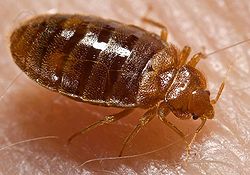
How to Get Rid of Bed Bugs
5. Use Nuvan strips for small objects. Anything that may have had contact with bed bugs, including pillows, stuffed animals and even alarm clocks are put in a large garbage bag along with a single Nuvan strip. Seal the bag tightly and leave for three days to kill all the bed bugs.
Although Nuvan strips contain a low dose of toxins, these strips still be sure to wash all fabrics and wipe down any hard surfaces that were placed in the bag.
6. Repeat each step multiple times. Do not assume that one dose of Nuvan or Boric acid, or a single round of sticky traps and vacuuming will rid your home of all the bed bugs. Repeat each action 3 times no more than ten days apart.
7. Contact a professional. Some bed bug infestations are too large to handle on your own. In such cases, contact a professional who can safely use stronger products to kill all the bugs in your home while you are safely removed from the toxins.
While bed bugs have a bad reputation, this is due entirely to the inconvenience they cause home owners and the stigma against all bugs in general.
Bed bugs do not carry disease or make their hosts sick, unless they have a rare allergy. Also, bed bug don’t burrow in skin and remain on people like rumors suggest. Despite all this, no one wants bed bugs, because it’s not sightly to have bugs crawling around your house.
Guide to Bed Bug Problems
The process of getting rid of bed bugs is simple, straight forward and efficient for a small infestation of bed bugs, when you follow the proper bed bug tips. For larger infestations, professional help may be the only solution. With a few safe chemicals, tedious washing and future preventive measures, you can take back your home from the bed bugs.
How to Get Rid of Acne Scars
You’ve likely seen people who are scarred from having acne. It can make you very self-conscious about your appearance, affecting your lifestyle and self-esteem. It’s not the person’s fault. No one chooses to get acne and some cases can be severe. Acne affects everyone to differing degrees and sometimes not at all.
Acne scars will often disappear after the first year or two but many people have them for the rest of their lives. The good news is that there are treatments available for people with acne scars. You no longer have to hide your looks or be self-conscious all the time. If you do have acne scars and want to do something about them, here is some information you might find helpful.
What Causes Acne Scars
Acne scars develop from popping a pimple. It’s natural to want to get rid of the unsightly little bumps. But when you pop one, it leaves a mark from the damaged skin. The deeper the pimple, the more damage you cause from doing it. The scars appear where the skin becomes discolored due to the inflammation of acne. So every time you pop a zit, you are making the problem worse.
Acne scars develop from two reasons: either loss of skin tissue or the buildup of skin tissue around the lesion. The body will try to heal itself from the inflammation of acne which is why scars will sometimes disappear. However, when the acne condition is severe, the development of scars is inevitable and treatment is your only option.
Acne Scar Treatments
If your acne condition is severe, you should always see a doctor. They can prescribe medications such as antibiotics and topicals to help fight the inflammation and bacteria. But if you already have the scars, there are several procedures available to get rid of them. These acne scar treatments each have their own degrees of success as well as separate costs associated with them. But for a smooth and healthy looking skin, you might find it worth it to try an acne scar removal treatment that is right for you.
- Laser Resurfacing: Probably the best treatment available for acne scars but also the most costly. Performed by a dermatologist, the scarred area is first given local anesthetics to numb it. The doctor then uses a laser to remove the top layer of skin, leaving it smooth. Some cases require multiple sessions to remove all the scarring and the healing time from this procedure can take anywhere from one to two weeks. The good news is the end result is a healthy and normal looking skin. If you have severe scarring from acne, a laser resurfacing treatment will be the best option for you.
- Dermabrasion: Similar to laser resurfacing but the big difference is the doctor uses a fine metal brush or diamond blade to remove the top layer of skin. Just think of it as a dremmel tool being applied. This method is commonly used for mild cases of acne scars but can also work for more severe cases if the scarring is not too deep. A local anesthetic is used and healing time is a bit longer than for the laser treatment, usually two to three weeks. Another abrasion method called Microabrasion is also common but instead of a high-speed brush or blade, aluminum oxide crystals are used to remove the skin.
-
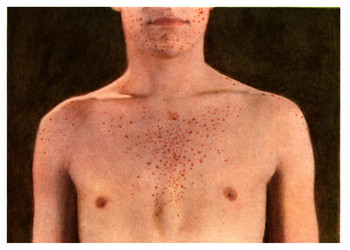
How to Get Rid of Acne Scars
Chemical Peels: A chemical peel is like a really potent exfoliating treatment. The treatment is performed by a doctor and works the same as using an exfoliating product at home except in this case the chemicals used are harsher. They are designed to remove the old acne scarring, leaving them less visible. The treatment is less expensive than other methods and is also used to treat current acne. Healing time is also much shorter. Multiple sessions may be required to get the best results.
- Collagen Injections: Most everyone is familiar with collagen injections. They have been a favorite form of mild plastic surgery for years (although I wouldn’t call it surgery). It is also the most common method of treating acne scars. Collagen is injected underneath the skin and into the scar, causing it to puff out and level with the surrounding skin surface. Collagen is one of the cheaper methods to treat acne scars but it is not a permanent one. You have to repeat the procedure every three months or so. Another treatment that is similar uses a person’s own body fat instead of collagen in the same way. Body fat injections last a little longer than collagen but the body eventually absorbs the fat.
- Skin Grafts: Some acne scars are so severe that the only way to completely get rid of them is through surgery with skin grafts. This is probably the most expensive and costly of all the acne scar removal treatments. Only a dermatologist can recommend you for skin graft surgery and the healing time can be quite long, almost assuredly with some time spent in the hospital. Before you go through with something like this, you should definitely check out the other treatments to see if they might work for you.
- Natural Remedies For Acne Scars: With the expense of doctors and medical treatments, rest assured you can always find alternative remedies for almost anything, acne included. Also known as home remedies, these treatments might have some success in helping mild cases of scarring. But these are not one-time application treatments. You have to use them continually for an extended period before you see any results.
When you have fresh acne lesions, try rubbing some Aloe Vera gel, Tea Tree Oil, or Honey onto the area. Treatments such as these should be done twice a day to prevent or lessen the development of scars. The honey should be applied before you go to bed at night. To keep it from getting all over you as you sleep, cover it with a bit of plastic or gauze.
If you already have scars, try a little Lemon Juice or Rosehip Seed Oil. The Lemon Juice will help to bleach the scars, making them less noticeable while the Rosehip Seed Oil should be massaged into your skin to help smooth the scars out. Both methods should be done twice a day.
And lastly, always use a glycerine-based soap to wash your face. Bar soaps are too harsh for your skin and can cause it to dry out, thus increasing your acne breakout. When you have acne, always use a dermatologist approved cleansing lotion, one that is oil-free or contains chemicals that will also dry out your skin. Taking care of your skin while you have acne is a great step in avoiding acne scars but if you do have them, know that you can get them removed through various treatments.
How to Get Rid of Acne
Acne is the most common skin disease in the USA. Over 60 million Americans have acne, and over 20 million have acne that’s so bad it leaves scars. And only 11% of acne sufferers seek medical help. 85% of teenagers suffer from acne at some point, and 20% of all adults also suffer from acne.
Acne can have serious effects on a person’s mental health. Acne is can cause the following symptoms: poor self-esteem, poor self-confidence, depression, anger, frustration, and social withdrawal. Fortunately, acne is completely treatable. This article deals with learning how to get rid of acne once and for all.
What Causes Acne
Acne is an inflammation of the sebaceous gland, the gland which produces sebum. The sebaceous gland is what keeps a person’s skin and hair from drying out. During puberty, hormones cause the sebaceous glands to become more active, but for most people, this slows down at age 20.
Factors that can contribute to acne include:
Hormonal changes – Puberty and the onset of menstrual cycles usually herald the arrival of acne.
Genetics – If your parents had acne, chances are you will have it, too.
Stress – Too much stress in your life can cause all sorts of problems for your body. When you get stressed out, your skin can break out in rashes, hives, or even acne.
Blocked follicles – Dead skin cells and oil can block pores, which is one of the most common instigators of acne.
Medications – Certain medications that contain lithium, halogens, or barbiturates can lead to an acne outbreak.
Steroids – Steroids boost certain hormonal levels. So since hormones (such as puberty) can cause acne, it’s only natural that steroid use would cause it, too.
Do It Yourself Ways to Get Rid of Acne
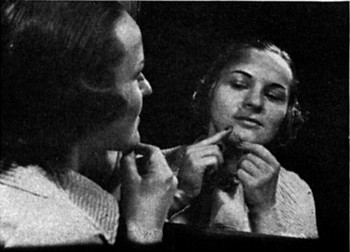
How to Get Rid of Acne
- Stop popping the zits. Every time you pop a zit, you damage your skin below the surface. The bacteria that causes zits then spreads through the damaged areas below the surface, causing more zits. And every time you pop a zit, your risk leaving a scar.
- Stop using oil-based make-up and beauty products. This includes some shampoos, facial crèmes, and cleansers. One of the main causes of acne is the build-up of oil on your skin. Oil clogs up your pores and causes infection.
- Don’t use harsh soaps or “exfoliaters” on your face as they can damage your skin, causing it to dry out quickly. When this happens, your pores work overtime to create enough oil to treat the dry skin. Then you are back at square one with too much oil. Only use an oil-free facial soap with salicylic acid to clean the pores.
- Avoid touching your face. Your hands contain a lot of oils along with bacteria. If you have acne, bacteria from your hands could worsen the problem.
- Stay hydrated. Drinking a healthy amount of water every day helps to keep your skin moisturized. When you get dehydrated, your skin becomes dry which then causes dead skin cells. These dead cells block pores, causing an acne infection.
- Change your pillow case. A dirty pillowcase is full of oils from your hair.
- Use a dermatologist approved acne fighting lotion. Your local pharmacy offers several brands of lotions and acne medications. Look for the stuff that contains salicylic acid, sulfur, or resorcinol.
- Get rid of the stress in your life. Stress can cause acne. You can wash your face and clean it every day but if your life is still stressful, you might not see much change in your condition.
Medical Ways to Get Rid of Acne
Severe acne requires medical help. Dermatologists can prescribe acne medications that you can’t get over the counter. One such medication is an antibiotic lotion that contains the ingredients retinoic acid and adapalene, which are both vitamin E extracts. These ingredients help by causing your body’s dead skin cells to fall off instead of clogging up pores.
Another prescription medication is an antibiotic in the form of a pill. Oral antibiotics are potent and can control the spread of the bacterial infection.
UV radiation has had some success is treating acne. Also known as the “acne light treatment”, UV radiation treatment is offered by many tanning salons and dermatologists’ offices.
Some patients can go on restrictive acne diets to reduce the amount of oils and harmful chemicals in their body. The diet method is usually conducted along with medical treatment. A healthier diet means healthier skin.
How to Lose Weight Fast
How to lose weight fast is the determined goal of any individual who wants to look and feel better. Years of inactivity and unhealthy eating may have added on unwanted pounds. But today the challenge is how to lose that added weight fast. Fad diets or dangerous diet pills can make fast weight loss unsafe and unhealthy. There are some surefire ways to lose weight fast without endangering your health.
- Increase your daily consumption of water. When the body is properly hydrated, it facilitates the faster burning of fat and increases your metabolism. Drink at least eight 8-ounce glasses of water daily, even more after vigorous exercise.
- Start exercising. If you aren’t already walking, swimming, jogging or running on a daily basis, add at least 10 minutes of physical exercise into your daily routine and keep increasing that amount until you do at least 30 minutes of exercise three to four times weekly. This will boost your metabolic rate, helping you burn calories and lose weight faster.
- Track your daily calorie intake. Since it takes a decrease of 500 calories daily to lose one pound per week, it can be easy to calculate just how many calories you are currently taking in and just how many calories you will need to trim in order to start losing quickly. Write down everything, including condiments, cups of coffee, pats of butter, that you consume each day so you can get an accurate picture of just how many calories you are really consuming and to help motivate you to trimming that number in order to accelerate your weight loss.
- Determine which foods you currently are eating that can be eliminated in order to reduce your caloric intake. Losing weight fast could be as simple as replacing a more caloric smoothie or coffee with cream with ice tea and no sugar, or your usual morning bagel with a fresh orange instead.
- Redesign your menus to be lean, fresh and healthy. Go for that fruit salad with yogurt dressing rather than cheeseburger and fries. Choose chicken and fish for your main courses. Eat as much fresh fruit and vegetables as you want, because they are nutritional powerhouses that also help you to feel full faster.
-
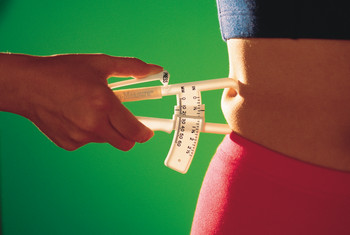
How to Lose Weight Fast
Reduce your portion sizes. Eat one fistful of popcorn from the bag, not the whole bag. Serve your meals on smaller plates to make portions look bigger. Drink a 6-ounce glass of juice rather than 20 ounces.
- Don’t eliminate snacks – just make them healthy ones. Opt for apples, raw nuts and rice cakes in place of candy or bakery items. Keep cut celery, carrots, jicama and bell peppers in icewater in the refrigerator ready for snacking and enjoy them plain rather than with fatty dips or dressings.
- Don’t skip breakfast. This is the biggest mistake most individuals who want to lose weight fast make, thinking that eliminating this meal will reduce more calories. Your body is like a finely tuned furnace and needs the calories you take in at breakfast to keep your metabolism running at peak efficiency for the rest of the day. Enjoy some oatmeal and fresh fruit, or poached eggs and grilled vegetables.
- Increase your fiber intake. Fiber-rich foods will help you to feel fuller longer between meals, resisting the urge to snack on fatty, sugary and unhealthy foods.
- Sign up for an aerobic exercise or weight training class. When you combine these forms of exercise three to four times a week with all of the above lifestyle changes, you can increase your metabolic rate by as much as 15%.
It’s also important to have established the mental commitment to wanting to lose weight fast so you can stay motivated and dedicated to making the lifestyle and menu changes necessary that will result in the pounds dropping off quickly. Don’t be afraid to take 2 to 3 days off from exercise each week to give your muscles a chance to rest and make sure you are getting enough sleep each night, because a lack of sleep actually interferes with your body’s ability to burn fat.
Any successful program to lose weight fast should be taken one day at a time, congratulating yourself on a daily basis for incorporating new habits and new ways of eating into your routine that will help you drop those unwanted pounds in the fastest time possible.
You find out more about losing weight fast by visiting:
How to Quit Smoking
Most smokers are familiar with the benefits associated with quitting smoking, but quitting smoking is still one of the hardest things anyone can try to do. Especially if you don’t know HOW to quit smoking.
Here are 7 tips for how to quit smoking:
- Formulate a Clear and Specific Goal – An individual who wishes to stop smoking needs to decide exactyl what their goal is and write it down. For smokers that smoke a pack a day or more, it may be better to cut back on cigarettes incrementally before quitting altogether. All real goal dates include deadlines, so set a smoke free date, in writing.
- Share the Goal with Family and Friends – After a goal is formulated, it needs to be shared with family and friends. There may be no accountability if the goal is not shared and it is important to inform others of the intent to stop smoking. Other people who smoke should be alerted of the goal and recognize the fact that they could prove to be detrimental if they offer cigarettes.
- Consult a Physician for Guidance – Your family doctor should be consulted before you quit smoking. Several prescription medications can help patients stop smoking.
- Seek a Support Group or Network – Individuals who try to quit smoking alone often fail, so it’s important to seek a support group or network that shares a common goal. If no such group can be located, online forums and message boards allow users to post their experiences and tips.
- Replace the Habit – Many smokers blame their inability to quit on missing the actual ritual or habit of smoking, so finding a replacement ritual can help. Chewing gum is an excellent replacement for cigarettes. But don’t replace the smoking a new negative habit like biting fingernails or chewing tobacco.

How to Quit Smoking
- Get Rid of Merchandise or Accessories – Most smokers have accumulated favorite lighters and other tobacco related accessories, so it is necessary to get rid of them. Any merchandise that reminds a person of their habit needs to be removed. Having a lighter around just makes it easier to light up a cigarette. Any cigarette brand related materials, like posters, ballcaps, or shirts, should also be disposed of. The constant reminder of cigarettes is a recipe for failure.
- Create Rewards to Encourage Good Behavior – Quitting smoking is a long process, and it’s not something that can be accomplished overnight. Create rewards that will encourage good behavior and help keep the process from becoming too frustrating. It can be hard to imagine the end result and smaller obstacles are easier to clear than the large one.
Most people who fail when they try to quit didn’t prepare. Quitting smoking is harder than some people think. Quitting smoking will improve your health and save you money, so even though it’s one of the hardest things in the word to do, it’s worth it.
How to Get Rid of Cold Sores
No one is thrilled about getting a cold sore. Besides being embarrassing and unsightly, cold sores are also itchy and painful. Once an outbreak occurs, the next step is to try to quell the virus.
There are a number of ways to keep cold sores from spreading. You should know the symptoms of a cold sore and how to keep the virus contained. Here’s how to get rid of cold sores.
12 Treatments of Cold Sores
- Make sure your cold sores are not canker sores. Cold sores are confused with canker sores, which look different. This may seem obvious, but treatments that are effective in eradicating canker sores won’t work in banishing cold sores. Cold sores are red blisters on the nose or mouth that are filled with pus. Canker sores are tiny white bacterial infections that are located inside of the mouth.
- Make sure your cold sores are cold sores. Mistaken identity sometimes occurs when cold sores are in their first stage. Cold sores may cause tightening of the skin, itching, and burning. In later stages, cold sores become larger and numerous, while filling with fluid.
- Don’t touch the cold sores. Once you are sure you have a cold sore, try not to scratch it, even if it seems like the itch is unbearable. Physical contact is the cold sore’s mode of transportation. Scratching or rubbing the bumps will only serve to infect another person, if not other parts of your face, with the virus.
- Use a clean washcloth and hot water with antibacterial soap to clean a cold sore. Since touching a cold sore can spread the virus to other parts of your face, use a washcloth soaked with hot water in conjunction with antibacterial soap to clean the blisters. Hot water and antibacterial soap will get rid of pus and minimize the infection. Gently scrub the cold sores and the area around them without getting vigorous, as this may encourage infection.
- Use a product containing petroleum to heal cold sores. A petroleum-based product (Vaseline, for instance) will prevent the herpes virus from becoming more infected, minimize its itch, and seal the virus in. Wash your hands with hot water and antibacterial soap before and after touching the sore. Apply the product outward to inward on the cold sore and its surrounding area so that the virus will not spread.
- Use over-the-counter antibiotics and painkillers. Neosporin is an antibiotic that helps heal cold sores. Ibuprofen, acetaminophen, and aspirin are painkillers that help stop cold sores from hurting. They also prevent you from rubbing the sores and spreading infection.
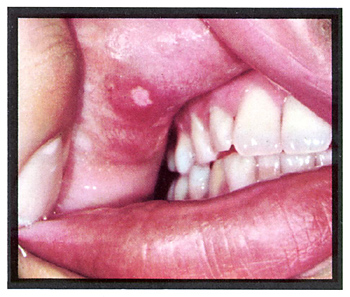
How to Get Rid of Cold Sores
- Use over-the-counter anesthetics. Products containing benzocaine can assist in numbing the pain. They are cheap and do not require a prescription. When cold sores are numbed by anesthetics, you will not have the urge to touch them and spread the virus.
- Cover the cold sores with oil. Apply garlic oil or oregano oil to the cold sores to keep them oiled. Cold sore scabs crack and re-heal, lengthening the life of the virus. Garlic and oregano oil are anti-viral agents that keep the scab soft.
- Take care of your body. Get sleep, eat nutritious foods, and take protein supplements. If you fail to take care of your body, cold sores will persist. The amino acid Lysine fights the herpes virus, as does Vitamin B.
- After fourteen days, seek medical attention. Go to a doctor if your cold sores last for fourteen days or longer. A cold sore should not last more than one to two weeks. A professional will prescribe prescription antiviral medication, (Denivar, Zovirax, Famvir, Valtrex, etc.).
- Be aware of any cold sore triggers so that you can avoid them. Take note of triggers when you have an outbreak and try to avoid them. There are a variety of triggers, including health problems (like a cold or the flu). Triggers also include menstruation, anxiety, stress, and salty or acidic foods (like citrus or potato chips).
- Avoid exposure to extreme weather conditions. Apply sunscreen in hot weather and avoid freezing wind. If you can’t avoid certain triggers, try to anticipate a cold sore outbreak. When you know you have been exposed to triggers, begin taking medication to shorten the life of the virus.
Cold sores are undesirable, but their lifespan can be shortened. Use knowledge of cold sore symptoms to identify them. Do not touch cold sores unless you are applying a petroleum-based product or washing them with antibacterial soap.
Avoid cold sore triggers and preempt outbreaks by taking medication when you suspect the beginning of a cold sore. If the virus lasts for fourteen days, seek prescription-strength antiviral medication. By following these steps, you can get rid of cold sores and keep them from coming back.
How to Treat Eczema
Eczema affects the very young, the very old, and people in between. Red, itchy, flaky, and inflamed skin characterize this chronic skin condition, making it difficult for sufferers to engage in everyday activities. Eczema flare ups can worsen and spread if not treated correctly.
The question of how to treat eczema is an age old dilemma. Eczema flare ups can be caused by a number of factors. Lifestyle choices such as diet and stress level as well as exposure to irritants such as fabrics, chemicals, and pollens can all play a role in the appearance of eczema. Fighting eczema is an ongoing battle, but with these helpful tips and treatment options, you can emerge the victor.
- People who suffer from eczema should see a doctor or dermatologist before trying to treat themselves as there are different kinds of eczema. During a typical consultation with a doctor concerning your eczema, the doctor will assess your lifestyle as well as your skin, as both play an important role in assessing treatment options.
- Most doctors will prescribe a topical steroid cream to be used for eczema break outs. Steroids work fast to clear up eczema flare ups. But the prolonged use of steroids can thin skin over time, making it difficult for skin to heal itself. Steroids also stop working as effectively the more they are used, so seek natural remedies in addition to steroids to deal with eczema for the long term.
- Part of treating eczema is knowing what causes your breakouts and taking active measures to avoid these substances. Consider getting yourself allergy tested to see if the culprit causing your eczema lies in pollens, foods, animals, or even the ingredients in your dishwashing liquid. Avoid harsh chemicals like the plague, and be sure to protect your hands with gloves when cleaning or washing dishes.
- The contents of your wardrobe also play a role in your ongoing battle with eczema. Stay away from rough fabrics such as wool as these can further aggravate your condition. Cotton based clothing allows skin to breathe, and won’t irritate skin.
- In treating your eczema naturally, diet is key. Try expanding your diet to include lots of fresh foods such as vegetables, fruits, and nuts. A healthy diet makes skin thicker, stronger, and less susceptible to foreign attackers such as eczema. Eczema friendly foods such as salmon and fish should also be a diet staple, as they contain fatty omega acids that protect skin.
- Stress can play a key part in eczema flare ups. For many people, leading a stress free life is a bit too much to ask, but finding activities that help you to release stress is essential to your overall health and well being. Eczema tends to worsen at the first sign of stress, so make time to relax and blow off steam.
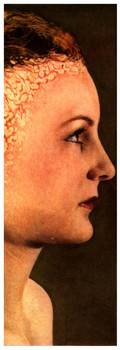
How to Treat Eczema
- Sleep is essential to both treating and keeping eczema breakouts at bay. Your body rejuvenates itself at night, and without a proper night’s rest, skin is less able to heal itself or fight off infection from bacteria. Aim for a solid 8 hours all at once, but if this is not possible, try small naps whenever you can catch them throughout the day.
- Heat and eczema are formidable co-conspirators. Stay out of the sun, and be sure to slather exposed skin with sunscreen whenever you go outside. If your house is particularly dry, use a humidifier to dispel dry and dangerous air. Winter is an especially tough time for people who suffer from eczema, so up your daily eczema regimen as Fall approaches to get a jump start on the cold.
- Bathing can be tricky for eczema sufferers. Be wary of heavily perfumed soaps, lotions, etc. as these can irritate your skin, or even be the cause of your eczema. When bathing, keep your shower or bath short, and try exfoliating the affected skin with a soft brush to banish dry, dead skin cells. After bathing, apply a moisturizer or topical cream to soothe and protect skin.
- Add natural vitamins and supplements to your diet. The vitamins Zinc, B complex, and Fish Oil all work to nourish your body from the inside out. All natural kelp supplements help to reduce the level of acidity in your body. Vitamin A works to soften skin, and can be ingested or taken in emulsion form. Vitamin E oil relieves dry and itchy skin.
- If you are in the middle of a bad eczema flare up, topical treatments are a must. Creams that contain aloe vera or neem oil can be very helpful for soothing an outbreak of eczema, and won’t thin the skin the way a steroid cream does. Wash your hands with Dove body wash, and keep hands and other eczema prone spots lubricated with Curel or petroleum jelly throughout the day.
- Witch hazel can also be used a natural alternative to prescribed steroid creams. This substance is cheap and easy to obtain from any drug store, and contains properties that are anti-inflammatory and work to promote healing within the body. Always allow creams to completely soak in to your skin. It is a good idea to use a cotton ball or tooth pick to apply topical treatments for eczema, as this is less likely to introduce bacteria in to the body.
If you suffer from eczema, don’t suffer in silence. Realize that a healthy lifestyle with a balanced diet, a regular sleep schedule, and low stress can keep eczema at bay. Be proactive, careful to check labels on your bath products, soaps, cleaning supplies, and clothes.
When your eczema does flare up, look to natural remedies to repair and revitalize your skin such as vitamins and gentle topical treatments. Eczema is usually a lifelong condition, so don’t think of your condition in terms of something you must get rid of right away, think of it as something that you must always be fortified against. Armed and ready, you could be eczema free for good.
How to Treat Psoriasis
Psoriasis is a chronic disease that causes excess skin cells to build up quickly on the skin. These cells form scaly skin patches that can cause pain and itching. How to treat psoriasis? Physicians have many options to offer patients.
Treatments for psoriasis try to stop the formation of excess skin cells and remove the rough patches that exist. Psoriasis treatment may consist of a combination of therapies, including oral medications, light therapy, and topical medications. Topical medications are the mildest form of therapy.
Topical Medications
- Topical corticosteroids are anti-inflammatory drugs that are often prescribed for milder psoriasis. This medication slows down cell production and shrinks inflammation. Topical corticosteroids are usually applied to inflamed scales until they disappear.
- Topical retinoids such as tazarotene were created for psoriasis treatment. These creams return the DNA in the skin cells to normal and the swelling decreases. The skin can become irritated from the medication and sunscreen should be used.
- Anthralin also works by returning cell DNA to a normal state. Anthralin makes skin smoother by dissolving rough patches. It stains quite easily; physicians prescribe it for short time periods.
- Vitamin D analogues slow the reproduction of the cells of the skin. These creams are used in mild to moderate cases of psoriasis. Vitamin D analogues are sometimes prescribed in conjunction with other forms of treatment.
Phototherapy
- Sunlight can be used to treat psoriasis in small amounts. Ultraviolet rays can slow the development of new skin cells. A doctor should advise the patient on the amount of sunlight; overexposure can worsen psoriasis.
- UVB phototherapy uses an artificial light source for UVB light. This therapy can be used in small areas or all over the body. Dry skin can result and skin may be temporarily irritated.
-
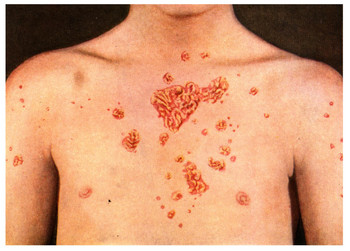
How to Treat Psoriasis
Narrowband UVB therapy is a more recent development in phototherapy. Patients receive doses two or three times a week. This therapy may cause more damage to the skin than UVB phototherapy.
- Photochemotherapy refers to the ingestion of a drug that causes sensitivity to light prior to UVA light therapy. UVA light is absorbed deeper into the skin than UVB light. This therapy is utilized in only severe cases of psoriasis.
Oral Medication
- Hydroxyurea is a milder oral medication that is sometimes combined with light therapy. It can cause anemia. Pregnant women should not use hydroxyurea.
- Methotrexate lowers skin cell production. Some side effects include tiredness, and stomach problems. Long-term use can lead to life-threatening side effects, such as liver damage and lowered blood cell production.
- Cyclosporine has a success rate that is close to methotrexate. It is an immunosuppressant medication and may cause serious health issues. Long-term use should be avoided.
- Retinoids also slow the growth rate of skin cells. They control symptoms, but the symptoms usually recur when the patient stops the medication. Retinoids can lead to birth defects; female patients should not have a baby for three years after taking retinoids.
Doctors can prescribe a variety of treatments for psoriasis depending on the level of the symptoms. The disease can usually be controlled with a combination of therapies; however, various side effects can occur. As one treatment becomes ineffective or the side effects too severe, another treatment can be pursued.
Psoriasis patients can also take daily baths with oily soaps and use moisturizers to improve their skin. Sufferers tend to feel embarrassed by their skin, so any action that soothes the skin may be welcome. Patients with psoriasis should know that a great deal of trial and error may be involved to find the best individualized treatment.
For more information about how to treat psoriasis, read:
How to Treat Rosacea
Rosacea is a chronic skin condition usually found on the face, neck, and chest. Rosacea happens when groups of capillaries just beneath the skin become enlarged. This condition normally occurs in adults, more often in women, between the ages of 30 and 50.
Rosacea is characterized by redness, blotchy spots, and visible blood vessels. This is only one of four different subtypes of rosacea. It can also manifest in the form of bumps and lesions, thickening skin, and eye problems. No matter what the symptoms, it leaves those who suffer from it wondering how to treat rosacea.
- Apply a cream made up of the herb Chrysanthellum indicum. Many people prefer to try natural remedies first. Extracts of this herb have been found to make the capillaries stronger. A study showed that after 12 weeks of using this Chrysanthellum indicum cream, participants saw noticeable improvement in their rosacea symptoms with minimal adverse reactions.
- Use green tea creams. Another natural remedy, green tea creams used twice a day have also been shown in studies to significantly reduce the redness, blotchiness, and red bumps associated with rosacea.
- Take daily doses of apple cider vinegar. Apple cider vinegar is an age-old home remedy for any number of things. In the case of rosacea, it is believed that the vinegar encourages the release of important digestive enzymes that can maintain the proper balance of bacteria in the intestines.
- Take B Vitamins. Rosacea has sometimes been attributed to having an inadequate amount of riboflavin, or Vitamin B2, in the system. This can be caused by the person not getting enough of it through their diet or by a digestive system that is not able to absorb enough of the B2. Taking a daily supplement of B vitamins may help clear up the rosacea.
- Use sunscreens and emollients. Rosacea symptoms like redness and visible blood vessels can cause the skin to be more sensitive than usual. The first treatment when this is the case may be to use sunscreens that don’t irritate the skin and emollients that can help to repair the damaged skin. Once the sensitivity has eased, other topical treatments can be used.
- Apply topical creams such as niacinamide cream or azelaic acid cream. Prescription topical creams like these can be very effective in treating the redness and pustules of rosacea by reducing inflammation. Azelaic acid cream comes from grains like rye, wheat, and barley and can also slow down the growth of the bacteria. Niacinamide cream is one form of Vitamin B3 and can strengthen the skin as well as help supply moisture and reduce inflammation.

How to Treat Rosacea
- Take oral antibiotics. Certain oral antibiotics like tetracycline and doxycycline can suppress the inflammation caused by rosacea. They are most often prescribed when the symptoms include the lesions and pustules. These drugs can also stop the formation of the blood vessels that are at the heart of the rosacea symptoms.
- Use glycolic acid peels, washes, or creams. Glycolic acid is successful in treating rosacea that has advanced to the pustules and lesions stage. It is often applied by dermatologists in the form of a peel every two to four weeks. The peel may be followed up by a wash or a cream containing glycolic acid to ensure the success of the peel.
- Consult with a physician or dermatologist about laser treatments. These treatments are often used when the rosacea has thickened the skin, especially on and around the nose. However, lasers can also be used to treat the redness, flushing, and red lines. Improvement may be noticeable after one session, but several sessions are usually required to complete the treatment.
- Resurface the skin with dermabrasion. Dermabrasion is a surgical treatment that removes dead skin layers in order to smooth the skin and get rid of irregularities. It is a good alternative for rosacea that has gotten to the stage where the skin has thickened. Dermabrasion generally requires several sessions and is done with the use of coarse sandpaper and circulating wire brushes.
While there are many ways to treat rosacea, there are no definitive answers as to what actually causes it. And since we don’t know what causes it, it is difficult to pinpoint ways to prevent it. But for someone who has had rosacea in the past, there are things to do that may prevent it from recurring or worsen.
The best way to do this is try to find out what triggers an outbreak. Alcohol, certain foods, and skin care products can be a factor. Exercise and stress can play a part, as well as windy or cold weather. A good understanding of the circumstances at the time of a flare up is the best preventative tool available.
How to Avoid Swine Flu
Swine flu (also known as the H1N1 virus) should be taken seriously. Swine flu cases have popped up in multiple countries, but public panic is something that can only make a situation about illnesses worse. Taking a rational and systematic approach to avoiding swine flu is the best way to avoid panic and it’s also the best way to avoid H1N1.
- Wash your hands with soap and water whenever possible. In order to avoid the swine flu, do not touch any part of your face. Doorknobs, phones, money and light switches are typical places to find germs.
- Wash produce before eating it. It has not been proven that the H1N1 virus is transmitted through vegetables and other food stock. Despite this, clean and rinse all produce with water to be on the safe side.
- Eat foods that are good for your immune system. Carrots, garlic, fish, and anything with Vitamin C are places to start. Sugar is something to avoid, which means that junk food is not on the menu.
- Do not let the swine flu pandemic stress you out. Under stress, the body’s immune system can weaken and open up to illness. Instead of worrying, find something healthy to occupy your time with. Yoga, listening to music, deep breathing, and exercise are among the options.
- Get a full night’s sleep. Sleep is an unavoidable part of keeping the body in good shape. When you get enough rest your ability to fight a sickness is increased. Make an appointment to see a doctor if you are having trouble getting the slumber you need.
- Do not share foods or drinks with other people. Infection from shared items is one of the ways that the swine flu is spread. Sanitize plates, cups and utensils with soap and hot water before using them again. Do not eat any food that somebody else has touched with unclean hands beforehand.
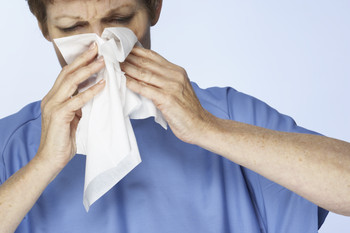
How to Avoid the Swine Flu
- Avoid contact with sick people unless necessary. The swine flu can be transmitted through touching and close contact. The exception to this rule can be when caring for the sick person. In all other instances you should keep your distance at all times.
- Wear a surgical or respiratory mask while outside of your home. It will take time to adjust, but the benefits to your health will make it worth the trouble. Expensive masks will be able to filter out the germs at a higher rate. Choose what works for your family.
- Be aware of outbreaks in your community. If there have been reports, avoid any public areas. This includes airports, shopping malls, restaurants and parks. If a person is recovering from the swine flu it may take days for it to leave their system. Only go to these places if it is necessary.
- Carry a container of hand sanitizer in your purse or bag. If a bathroom is not available to use to wash your hands, this works as well. It is available in both liquid and wipes form. Use the wipe form for wiping down anything somebody else has touched.
And that’s how to avoid Swine Flu.
How to Get Pregnant with Twins
Many times when women decide it is time to bring a baby into their life they often wonder how to get pregnant with twins. Twins are the result of hyper ovulation, the release two individual eggs at the same time, or twins are the result of a natural split of the egg after conception.
Two different types of twins exist: fraternal and identical. Fraternal twins occur when the mother has two eggs that become fertilized at the same time resulting in any combination of genders for the pair. Identical twins are the result of a single egg splitting into two embryos after fertilization has taken place and produces either two girls or two boys.
- Have a history of twins in your family. The easiest way to get pregnant with twins is to have a mother, sister, brother, or even distant cousin that has had a multiple birth. Fraternal twins are often hereditary and increase your chance of hyper ovulation.
- Visit your doctor. While it is always a smart idea to take a trip to the doctor before conceiving to make sure you are healthy enough to carry a baby, it is especially important if you are hoping for twins. Your doctor can run tests to determine if you are prone to hyper ovulation that would result in twins without having to turn to fertility drugs
- Gain weight before conceiving. A study put out by the American College of Obstetrics and Gynecology reported that multiple births are more common in women who are obese. Those with a body mass index of 30 or higher had significant increases in multiple births. While the study did not promote gaining weight to the point of endangering your own health, packing on a few pounds can produce the same results.
- Wait until you are older. The body accelerates ovulation as the proverbial “biological clock” begins ticking. Mothers over the age of 45 had a 17% chance of having multiple births.
- Eat a diet high in yams and diary. While few studies have been conducted to prove the reasons why, but a tribe in West Africa called Yoruba has the highest rate of multiple births in the world. The research that has been done tied it to the fact that their diet consisted mainly of yams which contains a chemical that causes hyper ovulation. An additional study among American women reported that a diet high in dairy can multiply the chance of having twins by five.
- Take a folic acid supplement. A study conducted in Australia showed that women who took a folic acid supplement on a daily basis before conceiving had a 40% increase of having twins. Even though few studies have been performed to validate it, it is proven that folic acid aids in preventing neural tube defects. The folic acid supplement may help conceive twins, but it will assuredly help develop a healthy baby.

How to Pregnant with Twins
- Look into fertility assistance. The science behind reproductive technology is on the rise. There are drugs that can aid in stimulating hyper ovulation, but the most effective route is in-vitro fertilization. Because the doctor will often implant up to seven embryos into the mother, the chance of a two of them taking are high.
- Have a single child before trying for twins. Most of the time, twins are not the firstborn children to a new mother. Allowing your body to adjust to conceiving and giving birth can be more inviting to fraternal twins.
- Conceive while breastfeeding another child. It is a myth that women do not ovulate while they are lactating. Ironically, research has shown that many sets of twins are conceived while the mother is still nursing another child. The reason is not proven but it is thought to be tied to the mother’s increased instinct to care for children as the bond between the mother and nursing child grows during nursing.
- Get pregnant while you are on a birth control pill. When used properly, birth control pills are thought to be 99.9% effective at preventing an unwanted pregnancy. It may seem counterproductive to take such a pill when you are trying to conceive, but the 0.01% chance that remains increases the chance of having twins drastically. Taking the pill inconsistently can play around with the hormones that lead to hyper ovulation.
There are many reasons mothers want to conceive twins. For some it is the benefit of having multiple children without having to be pregnant multiple times. Still, others have great appreciation for the intense bond that is likely to develop between the children.
While these ten tips are not guaranteed to result in twin births, they will increase your chances exponentially. With a little consideration for your diet and a few other measures, you can give birth to the twins you have been waiting to mother.
How to Get Pregnant Fast
Starting a family is one of the biggest decisions anyone can make, and before hearing the pitter-patter of those adorable little feet, there is one hurdle everyone has to clear – getting pregnant. For those impatiently awaiting the arrival of that new bundle of joy, here are some tips on how to get pregnant fast.
- Stop smoking. There are numerous harmful effects associated with cigarette smoking, but one not often stressed is the link between cigarette smoking and infertility. Smoking can damage a woman’s ovaries and advance the rate with which her body enters into menopause. Men who smoke can have lower sperm counts, decreased motility, and a higher number of abnormal sperm.
- Learn to detect ovulation. Women ovulate one time each month and are fertile one to two days before ovulation and about one day afterward. This is a relatively short timeframe. Having sex during this fertile period greatly increases the odds of becoming pregnant.
- Get romantic. Trying to get pregnant the natural way requires one specific activity – sexual intercourse. Increasing the frequency of lovemaking also increases the likelihood that one of these sessions will happen during a fertile period.
- Ditch the caffeine. Study results on the effects of caffeine on a woman’s reproductive system and fertility levels are inconclusive, but why take the risk? When trying to conceive, eliminate caffeine altogether. Quitting caffeine prior to conception will also make it easier to avoid the substance once pregnant. Caffeine has been shown to increase the risk of miscarriage and stillbirths. It can also exacerbate heartburn symptoms common among pregnant women.
- Eat a healthy diet. A healthy diet full of vitamins and minerals is a good idea at any time, including when trying to conceive. Avoid eating large amounts of meat as it can lead to elevated ammonia levels within the body which impede the ability of the egg to implant in the lining of the uterus. Foods high in chemicals such as preservatives and artificial sweeteners should also be avoided as they can affect blood sugar levels and hormonal balance.
- Take fertility supplements. Fertility supplements typically contain nutritional and herbal ingredients designed to increase the reproductive health in both women and men. Most fertility supplements can be purchased over the counter, and none of these supplements have been shown to increase the risk of multiple embryos upon conception. Even with scientific studies showing these supplements to be safe, however, it is still best to consult with a physician before starting any regular supplement regimen.

How to get Pregnant Fast
- Throw out the birth control. This may seem like common sense, but it is worth noting. Birth control methods like the pill, IUD, condoms, etc. are specifically designed to prevent pregnancy. Discontinue the use of all birth control when trying to conceive.
- Check your weight. Being overweight does not only decrease the fertility level within women, it can also lead to complications once pregnancy is achieved such as an increased change of miscarriage, high blood pressure, gestational diabetes, birth defects, high birth weight babies, and increased likelihood of Cesarean section deliveries. Maintain a healthy weight now to avoid all of these problems.
- Manage your stress. Although there is not enough scientific data to support a definite link between anxiety and infertility, many couples thought to be infertile have conceived after incorporating stress-reduction techniques. Lowering stress levels is never a bad idea, regardless.
- Lose the briefs. A high body temperature can decrease sperms motility, and as a result, a man’s fertility levels. Boxers are typically looser and more comfortable than briefs, offering a cooler environment in which sperm can thrive. Avoid hot tubs and saunas for the same reason.
- See your doctor. A couple is considered to have fertility problems after trying to get pregnant for one year with no success. Consult with a physician to make sure no physical problems exist which could be preventing conception.
- Be patient. Those are probably the hardest words to hear for anyone anxious to become a parent, but they need to be said. Worrying and fretting over not conceiving is not going to make it happen any faster, and could actually have the opposite effect.
Having a child is a life changing, miraculous event, and it all begins with conception. Staying healthy, focusing on both mind and body, and working with trusted health professionals will all lead to a positive end result.
How to Treat Boils
A boil, or skin abscess, is an infection within the skin that appears as a patch of tender redness. Boils progress into feeling firm yet tender to the touch, until the center fills with pus. This is a sign that white blood cells have travelled to the site of the boil to fight the infection.
The infection of oil ducts during acne outbreaks, inflammation of hair follicles in the crease of the buttocks, inflammation of the sweat glands, and breaks or cuts anywhere on the skin that have been infected with Staphylococcus bacterium can cause boils. Understanding how to treat boils correctly can prevent spreading the infection and permanent scarring
Here are some home treatments for a boil:
- Treat the boil as early in the infection as possible to eliminate further infection and other complications.
- The application of heat is the primary method of treatment for boils, either by soaking the infected area in hot water or applying hot packs to the site of the boil. Heat works to eliminate boils by increasing the body’s circulation, allowing the blood supply to quickly bring infection-fighting white cells to the site of the boil. This arrests further development of the infection while the body’s own antibodies get to work.
-
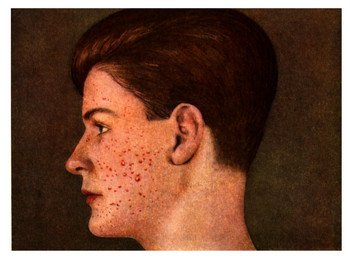
How to Treat Boils
Boils should never be picked, poked at, lanced or otherwise opened while the boil is hard and firm to the touch. Once the boil has softened and a noticeable head of pus has formed, they can be successfully drained in order to obtain quick pain relief. Sometimes immersion in hot water will cause the boil to drain itself. Boils should only be drained or lanced by a medical professional rather than the person experiencing the boil. Many large boils contain several pockets of pus which must be carefully drained and an experienced professional will minimize the risk of increasing the infection or permanently scarring the skin surrounding the boil.
- Taking antibiotics is a safe course of action to deal with any infection present, but antibiotics must be prescribed by a dermatologist or other healthcare practitioner. Usually antibiotics alone cannot cure a boil, but they do go hand in hand with having the boil professionally drained.
- Using an antibacterial soap on the area where the boil has developed is effective at removing bacteria from the surface of the skin and preventing future boils. Gently scrubbing the skin with a loofah brush while showering is an effective treatment for boils associated with acne, as this can help stimulate oil ducts and remove dirt and debris that may be clogging them.
- When treating boils, keep the pus from the boil contained within that area, as contagion of the pus to areas of the skin elsewhere on the body will cause boils to form there as well.
- Having a healthy diet goes a long way in treating boils and preventing their reccurance. A healthy diet includes plenty of fresh fruits and vegetables, plenty of liquids, and infection-fighting foods such as garlic. These foods strengthen the body’s immune system while a boil is healing.
Individuals with any kind of condition that weakens the immune system should seem immediate professional healthcare. Any of the following can weaken your immune system: diabetes, HIV, cancer, kidney disease, other chronic illnesses, and some medications.An untreated boil can be life-threatening for those with compromised immune systems.
Perhaps the best treatment for boils is prevention. Eating a healthy diet and washing with bacterial soap will go a long way toward preventing boils.
For more tips about how to treat boils, visit:
How to Eat Healthy
You might not BE what you eat, but what you eat helps determine your health levels. And the human body requires more than just calories. Your body is a living machine that requires certain raw materials to function. You wouldn’t run a car without oil, and you wouldn’t pour sugar in your gas tank. So don’t ignore the quality and quantity of what you eat either.
Here are a few tips for how to eat healthy.
- A balanced diet is the best diet of all. The body needs a range of nutrients and fuel for energy. Any diet which focuses on one particular food or food group, or completely eliminates another, is not going to result in long-term health. All of the following components are important for energy; muscle building; boosting the immune system; strong bones and teeth; smooth, clear skin; and even to protect eyesight.
- Drink plenty of water. The body is about 60% water, and all of the chemical processes which create healthy cells require water as part of the reaction or as a comfortable medium in which to occur. While coffee, tea, and soft drinks are popular beverages, and can be an enjoyable part of one’s daily intake, they can be diuretics, which means that they actually pull water out of the body. Be sure you stay hydrated.
- Proteins are the building blocks for muscles. Sources of protein are meat, fish, eggs, beans, nuts and whole grains. Nutritionally, proteins from meat are no better or worse than proteins from plants. However, animal sources are likely to contain a great deal more fat. Unless one needs to actively lose weight, there is room in a healthy diet for limited amounts of fat. Unfortunately, many processed and packaged foods contain high quantities of fat.
- Carbohydrates are the fuel that provides us with energy. Not only are bread and pasta carbohydrates, but all sugars as well. This is because a carbohydrate is nothing but a complex sugar. The body breaks all of these items down to simple sugars. Everyone needs a certain amount of this fuel. The problem is that it is easy to eat too many. Any carbohydrates that are not used immediately are stored as fat.
- Get a variety of vitamins. Fruits and vegetables are rich in some vitamins, while meat and dairy are rich in others. Vitamins protect the body in many ways, and the lack of certain vitamins can lead to serious health problems. Five or more servings of fruits and/or vegetables daily are recommended, and variety is important to provide the full range of vitamins.
- Get a variety of minerals too. Minerals provider similar benefits to vitamins, chemically, minerals are different. Fruits, vegetables and dairy products are good sources of minerals. Familiar minerals are calcium, potassium, or sodium.
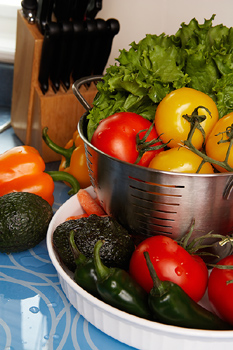
How to Eat Healthy
- A balanced diet includes occasional treats. Few people have the desire or discipline to never eat dessert or enjoy a sweet snack. In small quantities, compared to the majority of daily foods, treats can help a person enjoy eating and maintain an overall healthy diet.
- Get plenty of fiber. Fiber is found in plant foods, like fruits and vegetables. (Detect a theme here yet?) The bulk from fiberis necessary for healthy digestion, stimulating the intestines to move digested food along while nutrients are absorbed into the body.
- Limit your salt intake. The amount of salt added to almost all packaged foods is sure to add up to more than anyone should eat in a day. Continually introducing excess salt into the body will deplete calcium and magnesium, and excessive sodium intake can lead to conditions such as osteoporosis or high blood pressure.
- Limit your fat intake. Certain omega fats provide health benefits, but most fat is excess calories.
- Limit processed foods. Processed foods are foods that come in boxes and/or cans. They’re almost always too high in fat and sodium, and they’re almost always too low in fiber too. Overcooking and processing destroys the vitamins and minerals in food. So for a healthy diet, eat fresh foods as much as possible. Cook them at home, using only small amounts of water.
- Educate yourself to read food labels and research which foods provide which benefits. Anyone who begins to understand the effects of bad eating choices on health and longevity will be motivated to make improvements.
Any changes toward a healthier diet are good. Few people will enjoy all vegetables, but by experimenting with new foods most people can find items they like. Try different methods of preparation, too. If you dislike cooked green beans, try raw ones as a finger food. Squash by itself may be unpalatable, but as an ingredient in muffins, it might taste good.
If you reduce the bad choices and increase the good choices, you’ll eventually discover that your tastes have changed. Healthy foods will become your preference.
How to Lower Cholesterol
Elevated cholesterol levels have been tied to a higher risk of heart disease and stroke. But learning how to lower cholesterol is easy. Making simple changes to your diet and to your activity levels can lower your cholesterol dramatically.
These diet and exercise changes will lower your cholesterol even if it’s dangerously high, though it’s possible that your doctor may prescribe cholesterol lowering medication to aid the effort if you are at especially high risk for heart disease or stroke.
1. Get regular, moderate exercise.
The key here is to include physical activity into your life on a regular basis. Set a goal to exercise five to seven days a week, even if it’s only for 20 minutes to a half hour per session. Some people do well with a routine, such as going to the gym, or jumping on the exercise bike, while others need to think outside the box. As long as you’re up and moving on a regular basis, then you’re getting exercise, and that’s one key to lowering your cholesterol. Taking a walk with your dog, taking a walk at the local flea market, playing tag or kickball with the kids, mowing the lawn, moving around in the garden, taking a ballroom dancing or martial arts class, scrubbing down the kitchen, or any one of a few dozen other physical activities will get your blood circulating and lower your cholesterol levels.
To get in the physical activity habit, make a checkmark on your calendar every day you’ve added a physical activity to your day for at least twenty minutes. Strive to have at least five checkmarks on your calendar every week.
2. Eat more fiber, especially soluble fiber.
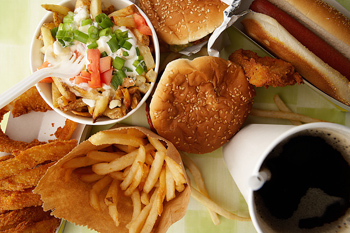
How to Lower Cholesterol
3. Eat fish at least three times a week.
Fish is high in omega-3 fatty acids. Salmon, albacore tuna, mackerel, lake trout, herring, and sardines are the fish species highest in Omega-3s. To a lower degree, flaxseed and canola oil also contain them. To retain the Omega-3 benefits in your fish, be sure to grill it or bake it.
4. Include Foods Rich in Vitamin B3 (Niacin) in your Diet
Vitamin B3, also known as niacin, helps lower cholesterol. Foods rich in essential fatty acids, like fish and nuts, also contain B3. Most whole grains, such as wheat bran, corn grits and oats, also contain B3. Peanuts are high in B3 as well, as are chicken and turkey.
5. Include sources of polyunsaturated fatty acids in your diet.
Walnuts, almonds, hazelnuts, peanuts, pine nuts, hazelnuts and pistachios are rich in polyunsaturated fats, which keep blood vessels elastic, and may reduce your risk of heart disease. Nuts are high in calories, so moderation is key.
6. Lower Your Saturated Fat Intake.
Choose olive oil instead of butter for cooking, ease up on the cheeses, and switch to fat free milk. Don’t think that switching to margarine is the answer, because margarine is just as bad as butter. Strictly limit your red meat intake, and choose chicken, fish, or turkey instead.
Avoid anything fried, including donuts and potato chips. Avoid anything that has the word “hydrogenated” associated with the word “oil” in the ingredients list.
7. If You Smoke Cigarettes, Quit Smoking.
When you quit smoking, your HDL cholesterol level improves relatively quickly. Within one year of quitting smoking, your risk of heart disease will be half what it was when you smoked. In 15 years your risk will be the same as someone who has never smoked.
Changing your lifestyle to include smart diet choices and regular moderate exercise are the keys to learning how to lower your cholesterol.
How to Lower Blood Pressure
Many people have high blood pressure for years without even knowing it. Undetected and untreated, high blood pressure can cause strokes and heart attacks.
Blood pressure is the amount of force pushing against artery walls as blood is pumped out of the heart. If this pressure stays elevated for a period of time, it can cause serious harm.
Understanding how to lower high blood pressure begins with lifestyle changes. Medication is also used to treat high blood pressure, and lifestyle changes can lower the amount of medication needed to control your blood pressure.
Here are some tips for how to lower your blood pressure:
- Quit using tobacco. Nicotine causes blood vessels to tighten, which makes the heart beat faster, which in turn raises blood pressure.
- Quit drinking alcohol. Alcohol causes high blood pressure in many people. Limit yourself to one drink per day if you’re a woman and to two drinks per day if you’re a man.
- Eat a healthy diet. Eating the right foods can lower the risk of developing high blood pressure. Eating right can also lower your blood pressure if you already suffer from hypertension too. Eating plenty of vegetables, fruits, and low fat dairy products will measurably lower blood pressure in most people.
-
Control stress. Stress and anxiety increase blood pressure. To help fight stress, perform relaxation techniques, breathing exercises, meditation or yoga.
- Lower your intake of caffeine. Caffeine causes a temporary increase in blood pressure. And people who drink caffeine regularly have higher blood pressure in studies too. So reducing your caffeine intake is an easy step you can take to lower your blood pressure.
- Go to the doctor for regular health care. Even if you have normal blood pressure, you should see your doctor regularly so that she can monitor your blood pressure. Blood pressure can change as you get older. If you’re on medication or a lifestyle program in order to control you blood pressure, then your doctor needs to track your blood pressure in order to determine whether or not your high blood pressure treatment is working.
- Cut back on your sodium intake. Sodium causes high blood pressure in some people. To maintain a healthy blood pressure, you should limit sodium intake to 2,300 mg each day. Older people who have high blood pressure need to limit their daily sodium intake to 1,500 mg.
Warning signs of high blood pressure can include headaches, nosebleeds and dizziness. Often high blood pressure presents no symptoms at all.
Medication is only one way of treating high blood pressure. Lifestyle and diet changes can help to control blood pressure levels too.
To learn more about how to lower blood pressure, see:
How to Gain Weight Fast
Gaining weight fast requires proper diet, supplementation, and exercise. Consumption of calories is the most important factor in gaining weight, but balancing these three factors can help you gain weight fast while maintaining your health.
Here are some suggestions to consider for how to gain weight fast:
- Keep your calorie count as high as possible to maximize your weight gain. To gain weight you consume more calories than your body is using. Your body uses calories when you exercise and to sustain life. If you eat as many calories as you burn, you’ll maintain your weight. If you eat fewer calories than you burn, you’ll lose weight. And if you eat more calories than you burn, you’ll gain weight. It’s that simple.
- Eat the appropriate amount of carbohydrates. Carbs provide your body with the fuel it needs to function. By getting enough carbs, your body will eliminate the need to burn fat for energy, and you will be able to maintain your weight. Getting enough carbs allows the other calories you consume to be used for weight gain.
- Eat the appropriate amount of fat. Fat naturally high in calories, and healthy fats keep your system balanced and healthy.
- Eat more protein. Adding a weigh protein supplement is a good way to supplement your protein intake and your overall calorie intake. Protein is a necessity if you want to gain lean muscle mass.
- Consider creatine. A creatine supplement can aid in the production of lean muscle mass.
- Many health food and supplement stores sell products specifically targeted at helping you to gain weight – usually through muscle production. This type of supplement combines a variety of ingredients, including protein, carbohydrates and others, to push your body to add bulk quickly. Besides their nutritional benefits, these supplements provide you with an easy and straightforward way to increase your calorie count.
- The inclusion of a comprehensive weightlifting program is an important element to quickly adding weight. Given the density of muscle relative to fat, building muscle is a good way to add bulk quickly. The addition of a weight program is a good method for shocking your body into growth.

How to Gain Weight Fast
- Target the largest muscles in the body to add the most amount of weight in the shortest amount of time. The leg muscles are very heavy relative to one’s overall body mass. These muscles tend to be easy to grow, too. And when these muscles are trained, the other muscles have to grow too, in order to support the larger muscles.
- A cardio regimen can help overall fitness and short-term weight gain. Cardio exercise forces your body to be taxed in different ways than weight training. These ways also produce growth. While it may seem counterintuitive to gain weight by running, maintaining general health will ensure that you obtain the maximum healthy results possible.
- Setting realistic and attainable goals is critical to any health plan. If your weight gain target is unreasonable, you’ll be more likely to become discouraged and quit. Setting reasonable, incremental goals is the best way to stick with your plan.
The combination of proper diet, supplementation, and exercise is the best way to quickly gain weight while maintaining overall health. These factors must be placed within the context of very real genetic limitations and goals should be set so as to remain committed to the plan. If you take all of these steps, you will give yourself the best opportunity available to reach your goals. Gaining a large amount of weight quickly can be accomplished, but it should be done safely.
How to Meditate
Learning how to meditate can be good for your mind, body, and spirit. Meditation relieves stress and generates a sense of inner peace. To experience the benefits of meditation, you need to consistently engage in a period of meditation each day. Just a daily fifteen minute meditation period can increase your level of concentration, generate an overall sense of calm, and help you maintain a positive attitude.
Meditation is easy. But most people go through each day with their mind and body in an overactive state, so it takes time to develop meditation techniques. It’s worth the commitment. Numerous books, CDs, and videos can introduce you to meditation.
- Commitment is an essential element in learning how to meditate. You should remain as committed and dedicated to your meditation time as you are to any other type of appointment.
- Comfort is another essential element in beginning a meditation practice. Wear comfortable clothes while meditating. It is not necessary that you meditate while sitting in the lotus position. Sitting in a chair with your back straight and your feet flat on the floor is perfectly fine.
- Location is important. Find a place where you will not be distracted. You need to meditate in a location where telephones, televisions, computers, voices, or any other variety of everyday noise will not disturb you. You may choose to meditate in a quiet area of your home or on your deck or patio. Meditating outdoors has the advantage of bringing you closer to nature and lessening the technological distractions that exist in most homes.
- Time is an important factor in learning how to meditate. You do not want to begin a period of meditation with a sense of urgency. Early morning is the optimum time for meditation for most people. When you first wake up, your mind is not filled with the day’s clutter. But select a time to meditate that fits into your schedule. You need to be able to maintain your commitment to yourself.
- Meditate for at least 15 minutes at a time. As you become more familiar with the art of meditation, increasing your time to thirty minutes will also increase the benefits you receive from meditation.
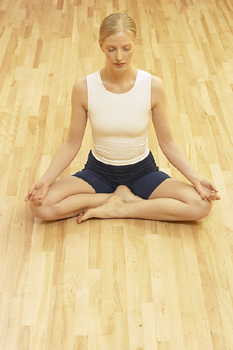
How to Meditate
- The method of meditation you engage in is a personal choice. You may want to alternate between different methods. If you are new to meditation, you may want to explore different methods to find the form of meditation that is best for you.
- Getting started is often the hardest part. Once you settle your body into a comfortable position, the next step is to quiet your mind. To clear your mind of miscellaneous thoughts may require some practice.
- Mantra meditation is a good way to stay focused on the meditative process. You simply concentrate and either mentally or audibly repeat a certain phrase. Mantra meditation makes your mind focus on that one word or phrase and keeps it from wandering toward busy thoughts.
- You might find it easier to meditate if you visually focus on a specific object. The flame of a candle could be your focal point. If you are meditating outdoors, you might want to focus on an object of nature such as a tree, a flower, or raindrops splashing on a leaf.
- Breath meditation is another form of meditation that you might want to try. Once you get into your chosen meditative position, relax your body and become consciously aware of your breathing. Simply sit and concentrate on each breath. Notice each time you inhale and each time you exhale. Think of nothing else during this time.
If you are just learning how to meditate, there are a few things you can do that might help you succeed in reaching your goal of being able to quiet your mind and relax your body. Lighting candles is a frequently used method of creating a relaxing atmosphere in the area you have designated for meditation. Playing music that is designed to help you achieve a meditative state is also helpful. The sound of moving water, either from an indoor fountain or in a natural setting, induces a state of relaxation.
Once you begin experiencing the mental clarity, inner peace, and physical relaxation that comes from regular meditation, you will protect the period of time you have set aside for meditation from disruption. The time you designate for meditation is a gift you give yourself and it is a gift that you will benefit from in all aspects of your daily life.
How to Lose Weight
Modern life is a sedentary affair for most people, and as a result, obesity plagues contemporary culture. Obesity can lead to serious health conditions.
Crash diets and miracle drugs will not deliver a trim physique. Lifestyle changes and good habits can develop a slim figure though. For those that want to learn how to lose weight, consider the following ten tips:
1. Control Your Cravings by Changing Unhealthy Eating Patterns.
Many people eat a small number of large meals (2-3) in order to save time during their busy day. And some busy people try to catch up by eating a big meal right before bedtime. Eating several small meals throughout the day enables your body to metabolize foods as they are consumed. And your stomach will be accustomed to feeling full after smaller portions. Eating five or six small meals each day can also help you keep your cravings for food under control.
2. Cardiovascular Exercise Will Help You Lose Weight.
Running, biking, and other rigorous cardiovascular exercises are fundamental weight loss tools. Getting at least an hour of cardiovascular activity every other day can help you shed unwanted pounds and improve your cardiovascular health. Strong lungs and a healthy heart will also allow you to enjoy a longer life.
3. Cut Sugary Drinks from Your Diet.
Sugary soft drinks are usually sweetened by unhealthy additives like high-fructose corn syrup. These inefficient simple sugars are a poor source of energy. Soft drinks add unnecessary calories to your diet. Replacing them with water might significantly reduce your daily caloric intake. For many, this change alone might yield noticeable results.
4. Employ Weight Training to Increase Your Resting Heart Rate.
When your weight training regimen causes damage to muscles in the gym, your body requires more energy to recover. As a result, your heart rate increases throughout the recovery period. A slight change to your resting heart rate improves your metabolism. For those who don’t want to gain muscle mass, high-repetition workouts with smaller weights will produce a toned physique.
5. Replace Simple Sugars with Complex Carbohydrates.
Your body needs fuel for a full day of activities, and complex carbohydrates provide energy in the most efficient manner. On the other hand, your body consumes simple sugars rapidly. While this does generate a short burst of energy, the end result is a devastating crash and a feeling of malaise. If you replace simple sugars with complex carbohydrates, your body will burn these fuels slowly throughout the day. After a meal of high quality carbohydrates like pasta, bagels, or wheat bread, the body is equipped with a stable supply of energy. Breaking the cycle of simple sugar consumption will prevent constant cravings for sweets.
6. Use Recommended Portion Sizes When Planning Meals.
Most modern commercial food manufacturers suggest portions that meet certain daily values. If you consume foods according to these metrics, it is easy to keep your weight under control. Most unhealthy diets involve over-consumption of specific foods. Recommended serving sizes provide a reasonable way to measure your dietary intake.
7. Make Gradual Changes.
When trying to lose weight, gradual lifestyle adjustments build new habits. While radical and abrupt changes might better quell one’s anxiety, they are difficult to sustain for a long period of time. Making a few gradual changes each week allows for incremental, sustainable improvements. For example, if you are considering a new cardiovascular routine, try starting with a short run (or walk) every other day for the first week. As your performance improves, add more time to your cardiovascular training. These incremental changes allow you to develop new habits without experiencing emotional exhaustion.
8. Cut Fast Food from Your Diet.
The fast food restaurant is not an ally in the battle to lose weight. Those cheaply-made foods are high in fat, sodium, and sugar. The snack machine is another foe in your quest to trim unwanted pounds; convenience foods typically gain their flavor from inexpensive sweeteners like high-fructose corn syrup. If you cut these choices from your diet, you will experience a reduced intake of harmful fats and sugars.
9. Monitor Your Daily Eating Habits.
Many successful dieters record meals and snacks in a food diary. Keeping a food diary allows you to review your dietary choices. You may notice similarities between situations when you felt the urge to overeat. Some individuals rely on binge eating to provide comfort in the face of emotional stress. A food diary can help you discover emotions that trigger the desire to overeat.
10. Snack on Fruits and Vegetables.
Fruits and vegetables are healthy snacks that quell your hunger, and they’re a great source of vitamins, which are an important part of a balanced diet. When dessert cravings emerge, an apple can satisfy without the fat and artificial sweeteners. When your hunger for a quick snack feels overwhelming, munch on a carrot. This will fill you up without making significant additions to your daily caloric intake.
Conservative lifestyle adjustments will help you lose weight permanently instead of temporarily. Make a few simple changes each week. As you achieve healthier habits, you will be able to gradually introduce more aggressive steps. This will help you make incremental improvements without feeling overwhelmed.
When you want to lose weight, avoid shortcuts like fad diets and extreme workouts. While these unsustainable trends might help you shed pounds temporarily, the weight will return when your body can no longer tolerate the consequences of exhaustion and malnutrition. Healthy fundamental habits are the key to keeping a slim figure.
How to Get a Six Pack
Everyone wants great abs, but few people have them. It takes determination and discipline to just maintain a healthy body, let alone a chiseled physique.
But getting a six pack is simpler and less painful than most people realize. This simple regimen of abdomen exercises and weight loss training will whip that midsection into shape sooner than you can say washboard.
1. Do sit-ups.
Sit ups are the most basic ab exercise possible. Lie on the floor with your knees bent at a 90 degree angle, with your hands crossed on your chest. Lift your upper body until your torso is upright, then bring it down again. Repeat.
2. Do srunches.
Crunches are like sit ups, but you don’t bring your torso all the way up. Instead, use your abs to pull your shoulders up and forward, without lifting your back off the ground. This motion is the quick and easy way to build abdominal endurance and strength.
3. Do bicycle kicks.
Lie on the floor and put your hands behind your head. Lift your legs at a 45 degree angle and spin them like you are pedaling a bike. At the same time, touch your elbows to the knee on the opposite side. This is one of the most efficient ab workouts possible because it uses more muscles than any other single exercise.
4. Do leg lifts.
This will build up abdominal endurance while strengthening your muscles. Lie flat on your back with your legs straight out in front of you. Lift both legs up and your shoulders up while keeping your back flat. You should also alternate using only one leg at a time for added challenge.
5. Work the obliques too.
Many people tend to miss these crucial muscles while ab training. These are the long muscles that run on either side of your abs. To work them out, do sit ups and crunches with your knees on the floor to one side. Flip your legs to the other side every set to get both sides.
6. Use weights.
Once you feel comfortable doing multiple reps of each exercise, it’s time to take it to the next level. Hold a weight in your arms, across your chest, when you do sit ups and crunches. A barbell weight will suffice, but a medicine ball is optimal. Increase the weight as you get accustomed to each increment.
7. Run
Jogging doesn’t just strengthen your legs. It also works out the body’s core muscles, specifically the abdominal muscles. While running, these muscles will contract to help maintain your balance. It will also burn off excess belly fat. A six pack is pointless if nobody can see it.
8. Incline your legs during sit ups and crunches.
Many gyms have specific benches for this purpose, but if you don’t have access to one you can get creative and make one yourself by fastening a wooden board to any structure will horizontal parallel beams like a fence or the foot of your bed. The steeper angle will make for more challenging sets.
9. Create a regimen.
You need to do at least one set of each exercise in one session if you want to maximize your work out. I do every one of these exercises in the order I have provided, and I sprint 100 meters between each set. Sprinting is excellent for keeping your heart rate up and it works out your lower abs. Alternate your ab exercises and jogging every day to give your muscles time to heal.
10. Get your bodyfat percentage below 10%.
It doesn’t matter how well-developed your abdominal muscles are if they’re covered in a layer of fat. For your abs to become visible, your bodyfat percentage has to get below 10% if you’re a man. (A woman will have a higher bodyfat percentage and still have a visible six-pack.)
If you follow these exercises and stick with your regimen, you should see results in a matter of weeks. You just have to be focused; the hardest part of working out is getting started. Once you get used to daily exercise, it becomes second nature. Because everyone’s body is different, make sure to pay attention to your body when you start your regimen. You don’t want to over exert your muscles. You should also combine your ab workout with a general exercise routine and a healthy diet. Not only will the health benefits pay off, you’ll have a great body to match. And last but not least, have fun. Exercise should be an enjoyable activity, not a chore. If you keep at it and have fun, you will be well on your way to a six pack.
How to Overcome Depression
If you suffer from depression, then before you look at any other solutions, hints, or tips online, you should seek the help of a medical professional. Depression is a serious and sometimes debilitating illness, and no one writing for this website (or most others) is qualified to provide medical advice.
That being said, we do have some tips about how to overcome depression. Consult with your doctor regarding the appropriateness of these action steps. Managing depression can sometimes require additional help. We encourage you to reach out to other whenever you feel overwhelmed.
- Understanding the reason for your depression may be the first place to begin your recovery journey. Think about when you last were truly happy. What were your circumstances then? What did you enjoy doing at that time? What has changed? If you cannot go back, what can you do to move yourself forward again?
- Why not try acting the way you wished you felt and doing what you used to enjoy? If you wait for the proper feelings to motivate you, that time may never happen. In fact, feelings should follow your decisions, not determine them. The amazing reality is that your feelings of pleasure tend to line up quite nicely after you experience normally enjoyable activities. Straighten your posture, smile, establish eye contact with the world, and act the way a happy person acts. It will actually make a difference.
- Some people suffer from depression when the balance of work and pleasure becomes uneven in their lives. They may feel totally overwhelmed by work responsibilities and shut down emotionally as a coping mechanism. Conversely, too much free time and idleness is also unhealthy for you emotionally. Restoring your life to a more balanced flow of meaningful activities and free time can relieve depressed feelings.
-

How to Overcome Depression
Sometimes the solution for depression is as simple as starting an exercise program. Depressed people lose all their energy. They barely move through their days, doing as little as possible to keep going. The reality is that movement increases the energy that you need, and increased energy feels really good. Even though it may be the last thing your feelings tell you to do, go for a walk each day or join a gym program. Just get moving and get your energy levels back up.
- Doctors know that some medications can cause depression. This may be a good time for a complete physical and a serious talk with your doctor. Is it possible that some medication you are currently taking is responsible for your sadness? There are almost always other drugs available that can be substituted for the ones that are giving you problems.
- Other physical conditions such as hormone imbalances can also set your emotions on a downhill spiral. While you are at the doctor’s, talk frankly with him about your feelings of depression. This is not the time to hide your problem or be embarrassed. Your doctor can prescribe medication that can help put you back on a solid footing emotionally.
- There are occasions when it may be most appropriate to see a professional who can help you understand the root of your depression and how to overcome those negative feelings. Emotional health specialists see people with this concern all the time. They are trained to help you out of the hopeless hole in which you find yourself. Their counseling can uncover patterns of negative thinking and give you tools to become a more positive person.
- The average happy person has between 50-100 activities of daily living that he or she enjoys. For the depressed person, the number is very small and usually shrinking. To change this, force yourself to at least try new activities and areas of interest, scheduling them in if necessary. Look for intellectual, social, and cultural possibilities that may be constructive or simply pleasurable.
- It is important for all of us to have various levels of friendships and other relationships that are active and alive. Depressed people tend to shrink back from others and then think that no one cares about them. If you find yourself in this trap, it’s time to step out and increase your opportunities for meeting others. Caring about others helps put our own issues in balance and gets our minds off ourselves and our needs.
- Do you have personal problems that have caused consequences that may have triggered your depression? Maybe it’s time to deal with the bad choices and habits that drive you mentally into these dark discouraging places. It is not necessary to fix everything at once. Taking small positive steps will give you a sense of accomplishment and move you in the right direction.
While there are many root causes for depression, there are also many ways to manage depression and the feelings of hopelessness and despair. Establishing realistic expectations, replacing negative thought patterns with positive attitudes, maintaining a healthy lifestyle, and getting professional help if necessary are all important tools for your recovery. Don’t wait for your feelings to give you permission. You will only start to feel better as you actively pursue your positive future. There is a place of happiness and contentment. You had it once, and you can find it again.
For further details about how to overcome depression, check out:
How to Get Rid of Stretch Marks
Everyone who has them wants to know how to get rid of stretch marks. They often show up after someone puts on weight, begins working out, or has a baby.
Nobody wants to live with stretch marks. The good part is that for as many ways as there are to get stretch marks, there are just as many to remove them. Here are a few of the most common treatments for removing stretch marks.
- Apply Tretinoin creams. Tretinoin creams have been proven to reduce the appearance of stretch marks. However, a doctor must prescribe the cream because of the potential risks involved if you have another skin ailment.
- Apply Vic’s Vapor Rub. Although dermatologists are unsure why applying Vic’s Vapor Rub to stretch marks works, many people have found success in a matter of a few weeks. Rub it on with a washcloth with high pressure and leave it on over night.
- Exfoliate daily. By using a loofah or rough textured washcloth, the dead cells on the surface of the stretch marks are removed. This allows for the cells to breathe and receive vital nutrients for proper growth.
- Increase circulation to the area. Taking hot baths and massaging the area on a regular basis can help to increase circulation. When the blood flows more freely, more nutrients and oxygen are taken in by the affected cells and increase the likelihood that the stretch marks will diminish.
- Get an endermologie massage. Endermologie massages are performed by a machine that works deep into the skin in a systematic manner. This increases circulation to the area as well as helping to expel toxins that impede the natural process of cell development.
- Get a tan. Whether you tan naturally or visit a tanning salon, the vitamin D can eliminate minor stretch marks and decrease the visibility of major ones. Just make sure to use sun screen no matter which option you choose to avoid further complications with your skin.
- Experiment with natural creams and lotions. Many products on the market claim to eliminate stretch marks, but not every product works for every user. Look for those that contain natural ingredients such as cocoa butter, vitamin E, rose hip oil, and Shea butter.
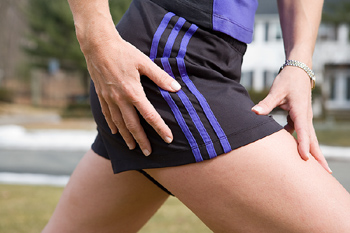
How to Get Rid of Stretch Marks
- Request microdermabrasion at the spa. Microdermabrasion is a cosmetic procedure that is popular in salons and spas. It is done by removing the outermost layer of skin through chemical or mechanical methods. If the stretch marks are not deep, a microdermabrasion procedure can completely remove them in a single day.
- Talk to your doctor about laser therapy. Laser treatments are available in several different types that help reduce the appearance of stretch marks. They can also heal the skin in very early phases to prevent stretch marks from ever appearing.
- Research cosmetic surgery. The best way to remove stretch marks in the abdominal area is with a tummy tuck. This procedure involves removing part of the skin below the belly button to tighten it. After, plastic surgery can reduce the appearance of stretch marks depending on the affected areas.
Stretch marks can often be diminished through simple creams and activities that increase circulation. However, in extreme cases, doctor administered medicines or procedures may produce the best possible outcome.
Getting rid of stretch marks can allow you to feel more comfortable in your own skin. You will no longer feel the need to hide during swim suit season or feel anxiety instead of excitement before a vacation. Removing stretch marks will improve the look of your body as well as your self esteem.
How to Treat Acne
Acne is a common skin disorder characterized by areas of the skin that contain multiple non-inflammatory markings. These markings are referred to as pimples, and they can occur anywhere on the human body. Pimples are most commonly found on the face, neck, bank, and chest.
Acne is an affliction which most commonly affects teenagers who have naturally oily skin and are going through intense hormonal changes. Many adults suffer from acne their entire lives too. Acne can be embarrassing, unappealing, and uncomfortable. Here are some common acne treatments.
- Topical Bactericidals – One of the most common treatments of acne are over the counter topical bactercidals. These topical ointments are either gels or creams and contain benzyl peroxide, which helps clean out the pores. These products are inexpensive and often have successful results, although the products mainly work by drying out the skin as opposed to preventing bacteria buildup. Constantly drying out the skin can cause other irritations which can be more difficult to get rid of than acne.
- Oral Antibiotics – Oral antibiotics are sometimes prescribed by physicians, and they’re considered the most effective way to treat acne. These antibiotics work to prevent the build up of oil on the skin. But oral antibiotics often become less effective in preventing bacteria and acne over time. Oral antibiotics also often lead to side effects, which include causing stomach pains weakening the affect of oral contraception pills.
- Topical Antibiotics – Another popular form of acne treatment are topical antibiotics. Topical antibiotics, the most common of which are erythromycin and clindamycin, kill the bacteria and oils that are blocking follicles. This treatment option is often preferred because it does not come with the same side effects that oral antibiotics come with, but its effectiveness is often diminished when used on areas larger than the face.
- Oral Retinoids – A daily oral consumption of isotretinoin, which is a vitamin A derivative, for a period of up to 6 months can have long-term positive affects on the reduction of acne. Studies show that the consumption of isotretinoin works by preventing the glands from producing unnecessary oils. Almost 80% of patients who have taken oral retinoids have had long lasting success after they stop taking the drug, although 25% of patients begin to re-grow acne after staying off the drug for a month.
- Hormone Therapy – A popular treatment for acne is cortisone hormone therapy. In this treatment a doctor will inject a shot of cortisone into a pimple, which immediately reduces the pimple’s swelling and redness. While this does not prevent future acne growth, it does reduce pimples to a point where they can be easily covered with makeup.

How to Treat Acne
- Proper Hygiene – One natural way to treat acne is to have proper hygiene. By washing your skin each day, you can help prevent the buildup of oils which eventually causes acne. Some believe wearing clean clothes and sleeping on clean sheets will also prevent bacteria and oil from getting into your skin and clogging pours.
- Eat Less Sugar – Another way to treat acne is to improve your diet. Studies have shown that diet has one of the largest impacts on overall acne production. Foods high in sugar (including soda, candy, and white breads) release blood glucose which then releases insulin, which eventually will lead to acne development.
- Take Vitamins – Recent studies have suggested that consuming more of the right vitamins could help treat acne and prevent future acne development. These studies have shown that people with acne tend to have lower levels of Vitamin A in their bloodstream than normal people. People with severe acne often have low levels of Vitamin E. Therefore, some experts believe that consuming foods rich in Vitamin A and E could help treat acne.
How to Treat Anxiety
If you are struggling with anxiety, you are not alone. The demands of everyday living have left more people searching for how to treat anxiety than ever. Searching for treatments is important, as long-term anxiety can cause unwanted psychological and health conditions.
While there is no universal answer to help all those struggling to cope, there are certainly many helpful approaches. This article take a holistic approach toward treating anxiety, meaning it acknowledges the physical, mental, and spiritual components of each person. Here are some simple and practical ways to treat anxiety:
- Take an online test. There are many credible anxiety and stress tests available online. These tests can help you measure your anxiety, as well as articulate what exactly is bothering you. Many tests also provide helpful health information related to the dangers of long-term anxiety. They may also provide suggestions for other online and print resources.
- Identify and write down the sources of anxiety in your life. Simply naming your struggles may be liberating. By writing down the causes of your anxiety, you have proactively taken ownership and control of them. They are solvable. Your sense of fear and dread may begin to give way to the possibility of hope and resolution.
- Talk with someone. Your friends and loved ones may be more than willing to work with you to alleviate the causes of your anxiety. Additionally, your local school, religious organization, or community center may have free or low-cost programs designed to help you along in your journey. Check with your school or employer about on-campus resources.
- Identify that which gives you life. Do you love the outdoors, reading, or the arts? Embrace your passions. They allow you engage the world in a positive way. They help give you meaning and purpose. They help you to define yourself outside of worry.
- Exercise at least three times each week. Constructive physical activity such as aerobic exercise helps your body regulate your physiological responses to anxiety and stress. Your physical and mental wellness will benefit from a regular exercise program.

How to Treat Anxiety
- Discipline yourself to maintain a balanced diet. Your body reacts to junk food especially poorly when you are feeling anxious or stressed. Learn to enjoy healthy comfort foods and nutritious snacks.
- Learn simple meditation techniques. Things like belly breathing exercises, stillness, and guided visualization can calm your body and mind. Meditation may also help you feel more centered and focused.
- Make a habit of getting enough sleep each night. Your body will be more physiologically able to handle life’s demands if it is well rested. To facilitate restful sleep, place a notebook and pen next to your bed. Write down your concerns, and leave them on the pad.
- Learn to deliver a tactful ‘no’. It is easy to accept too many roles and responsibilities. If your peer makes a request you can’t handle, say no. Explain that you want to do your best in your responsibilities, so you need to focus on those which you have already accepted. Ask your peer if you can help later when you can give your full attention.
- Help others. Giving yourself away to others through service may bring restoration and contentment to your own life. Get involved by becoming active in a local charitable organization related to one of your passions.
While this list is non-exhaustive, it provides a useful starting point for considering the many causes of anxiety and treatments available for managing it. If you are having serious struggles with anxiety stress, or depression, please do not hesitate to seek help. Contact a licensed professional to discuss your needs and options.
How to Gain Weight
Some people have trouble figuring out how to gain weight. Some people’s metabolisms are so active that weight gain seems impossible. But habits and foods can help. The main idea behind gaining weight for both men and women is to eat more calories than are being used daily and to build muscle through weight training so that all the weight gained is healthy weight.
It’s important to eat healthy foods even if your goal is to gain weight. Proper nutrition and exercise are the keys to gaining weight in a healthy manner.
Here are 7 tips to remember before starting your weight gain routine:
- Never sacrifice quality for quantity. Body fat never shows up where you want it. You may be genetically predisposed to an apple or pear shape, which may cause you to have large and lumpy hips, or a big belly. When you gain fat instead of muscle, it seldom looks good.
- Do not use steroids to gain weight faster. You may want a body builder appearance before summer, but it’s not worth the risk of taking steroids. They cause severe acne (including embarrassing acne on the back), aggressive behavior, and added strain on the heart. Steroids also takes years off your lifespan. You will not look like a body builder in a few weeks, but you can build a lean, muscular physique that you will be proud to show off.
- Eat good foods, not sugary foods. Type 2 Diabetes is becoming a serious health issue and you do not have to add yourself to the list of people with diabetes just to gain a little weight. Do not eat simple sugars more often than you did before. They will make it more difficult for you to finish important workouts, and simple sugars can also give you headaches and make you fatigued.
- Pick up some weights. The best workout for those looking to gain weight and look good is weight lifting. Men need to try shorter repetitions of heavier weights than they are used to, and women need to wipe the fear of looking masculine out of their minds. For a woman to look like a body builder, it takes years of intense workouts. Casual weight lifting won’t turn a woman into a man.

How to Gain Weight
- Eat properly to help build muscle tissue. Both men and women need to eat more protein and more carbohydrates. Protein is helps you build muscle, and carbohydrates help you keep going throughout the day. Eating some fats is a good idea as well. Still take a vitamin supplement in case you are lacking anything from your diet. Also increase the amount of meals you eat in a day.
- Count calories. Counting calories sounds like something only people on a weight loss diet plan should do, but it isn’t. You will not be able to tell if you are being consistent in eating more calories unless you count how much you are actually consuming. Soups and meats can fill you up quickly but have fewer calories than you might expect. See how many calories you normally eat in a day, then add four hundred calories to that amount and see if you gain weight in the course of two to three weeks. Decrease intake if you gain too much and increase if you don’t gain enough.
- Consider factors other than diet that may be causing your low weight. Some medications (such as those that treat ADD and ADHD) cause people to lose weight or be unable to gain weight because of suppressed appetite. Smoking can also cause you to feel less hungry and just quitting may cause you to gain some weight.
Bulking up and gaining weight can be accomplished by anyone. Giving your body only good, protein-rich foods and weight lifting instead of kicking up the old running routine will provide results. Don’t get discouraged though. Every body is different and has different requirements so you are going to have to experiment a little if you have found that your first attempt did not work.
Keep in mind what you are looking for also. Some people may say that they just want to stop being so thin, but they don’t realize that the more likely outcome of a month long fast food binge with no weight training routine will be a sloppy appearance. What you want is muscle tone and a healthier appearance, so eat and exercise like somebody with a toned, healthy appearance.
How to Treat Sunburn
Anyone who spends time out of doors in the sun should know how to treat sunburn, as this is one of the risks of exposing the body’s skin to sunlight and UV rays. Extensive exposure of bare skin to the ultraviolet light rays produced by the sun results in the uncomfortable red and irritated condition known as sunburn.
Sunburn symptoms include a reddish tint to the affected area, skin that feels hot to the touch, a general feeling of tiredness, dizziness, and discomfort. There are numerous remedies and treatments for sunburn.
- Topical ointments can help relieve the pain and discomfort caused by sunburn. Aloe vera gel is a popular and inexpensive sunburn remedy. Anesthetic pain relievers such as lidocain and benzocaine are available over the counter at drugstores in spray or ointment form. Butter is often touted as folk remedy, but it should not be applied as a sunburn healer.
- Over the counter pain relievers containing aspirin, ibuprofen or acetaminophen can help sunburn sufferer’s relieve headache, nausea, mild fever and inflammation.
- Taking a cold shower, soaking in a tub of cool water to which moisturing oils have been added or applying cold compresses on a regular basis to the effected area are all effective ways to treat sunburn.
- Avoid using any soaps or detergents on the sunburned area, as this will cause further drying and intensify itching and redness. Applying creams containing aluminum acetate can help combat the drying effect of the sunburn.
-

How to Treat Sunburn
Soak several cups of oatmeal in warm water, then strain this mixture, applying the oatmeal water to the sunburn area for a nice, soothing effect. This way of treating sunburn is inexpensive and can be repeated several times throughout the day. After the oatmeal liquid has dried, rinse off with cool water and pat dry.
- Another natural remedy that speeds the healing of the sunburned skin is the application of plain yogurt to the affected area. The yogurt temperature should be cold as it comes right from the refrigerator. Slather on the yogurt and let dry, then shower off in cool water and pat the skin dry with a clean towel, being careful not to pull or vigorously rub the sunburned skin.
- Cooking a head of lettuce just until the water boils, then draining off the water to use as a skin tonic applied to the sunburn with cotton balls is another natural remedy that is an effective way to treat sunburn.
- Vinegar is another natural remedy from the kitchen cabinet that can sooth the painful itch of sunburn. Mix equal parts of vinegar and cold water and apply with a clean washcloth to the affected skin and let dry.
- Pour baking soda into a tub of cool water and soak those sunburned body parts for at least 10 minutes, letting your skin air dry when you leave the tub.
- Wear as little clothing as possible during your leisure time to help the sunburn during the healing process and avoid rubbing any rough material over sunburned skin. Drink plenty of fluids to keep your body properly hydrated and be sure to get enough rest and sleep.
Once your sunburn has healed, you can prevent it from happening again by being sure to always wear sunblock. Wear waterproof sunblock while swimming, sunbathing or skiing, and cover your head with a floppy sunhat while gardening or spending time outdoors. If your skin is particularly sun sensitive, don’t expose yourself to direct sunlight during the middle of the day, and wear long pants and long sleeves if you have to be out in sunlight for any extended period of time.
How to Lose Weight in a Week
Healthy weight loss requires dedication to diet and exercise over a period of time, but you can lose some weight in as little as a week. Following a few simple steps can produce noticeable results in matter of a few days that will have you looking and feeling better.
Fad diets are the wrong way to try to lose weight in a week. The right way to lose weight in a week requires the same discipline that any successful weight loss program requires. If you follow these tips, you’ll lose weight in a week, and you’ll look and feel better.
Losing Weight Tips
The following are 10 losing weight tips to help you get started.
- Cut 500 calories from your day. One pound of fat equals 3500 calories, so cutting 500 per day will result in a pound of total fat lost in a single week. You can choose to eliminate those 500 fewer calories by eating less, by burning off an extra 500 calories exercising, or by doing a combination of both.
- Drink more water. Most people carry 5 pounds of unnecessary water weight. Our bodies like to cling to water in case of emergency situations. Drinking plenty of water signals your body that it doesn’t need to store water.
- Avoid salty foods. If you drink plenty of water to flush out the extra water you have been holding on to, eating a meal high in sodium will be counterproductive. Salt will cause you to bloat up by starting the water holding process over from the beginning.
- Clean out your intestines. By incorporating at least 40 grams of fiber into your diet, you can remove an average of 7 pounds worth of putrified waste and fecal matter. Not only is this buildup adding extra weight, it is also leaving you feel sluggish and weak due to the toxins it is releasing into your bloodstream. Bananas, apples, and beans are great sources of fiber, but you may consider investing in a fiber supplement.
- Make minor adjustments to your diet. Switching from soda to water can save up to 200 calories, for example. Many changes are barely even noticeable because of the greater attention to quality that companies are placing on diet food products. Fat free dressing often tastes no different from the original and can cut out up to 10 grams of fat.
-
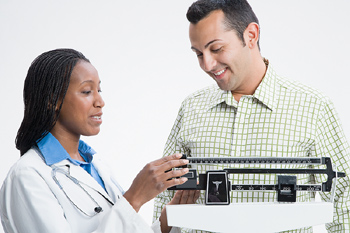
How to Lose Weight in a Week
Pay attention to how much you move. In the same manner as making minor adjustments to what you eat, do the same for your activity level. Take the stairs instead of the elevator, or walk to the drugstore if it is nearby. Not only will you burn extra calories during, you will also help to raise your metabolism to burn more throughout the day.
- Eat spicy foods. Spicy foods have been reported to raise metabolism by 50% in some cases. When making your normal dishes, add cayenne pepper, cinnamon, or simply snack on a pepper.
- Learn to tell when you are hungry and thirsty. Even though you think you may know the difference between being hungry and thirsty, your body sends out the same signal for both. Most people confuse thirst for hunger and end up eating every time they are thirsty. Next time you think you are hungry, try chugging a glass of water and then wait 20 minutes before deciding to eat.
- Graze throughout the day. Instead of having 3 solid meals, opt for 6 or 7 smaller meals every couple of hours. When you wait 5 or 6 hours between eating, your metabolism slows down drastically and has a more difficult time burning off what you have eaten. Eating every 2 or 3 hours never allows your metabolism the chance to slow down.
- Sit and stand up straight. Slouching is not only bad for you posture, but it can also restrict muscles. Standing and sitting up straight does not take that much extra effort, and it allows you to burn calories during the entire time. Also, you will notice your abs becoming more developed, less back pain, and a more alert feel.
Following these ten simple tips will show dramatic results in the way you look and feel. When they are all combined together, it is possible that in a single week to lose 15 pounds of unneeded water and waste that your body was holding for no reason.
If you continue following these guidelines past the week, you will continue to see results. You will lose fat, increase your energy, and improve your appearance. These changes will also produce a more positive outlook on yourself and life.

